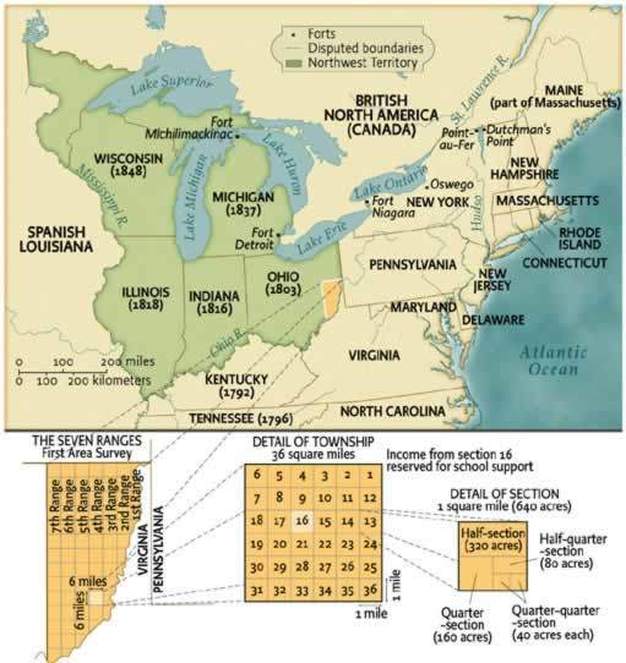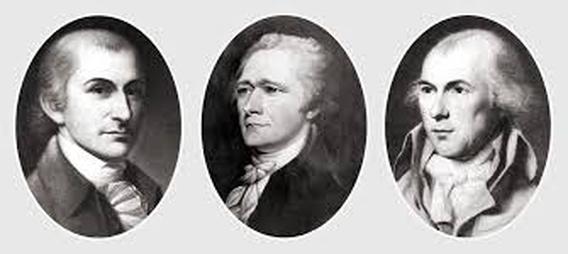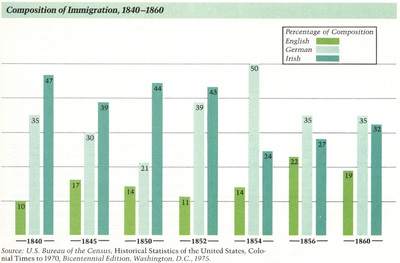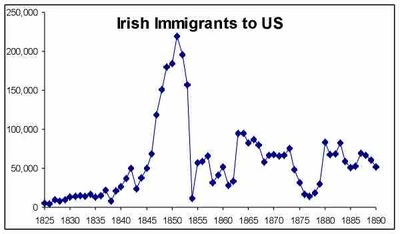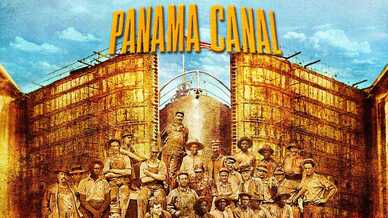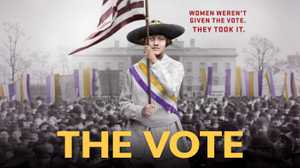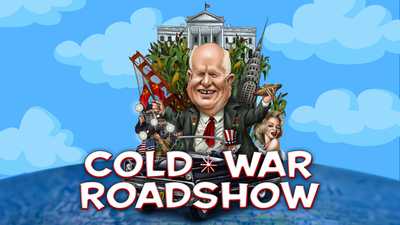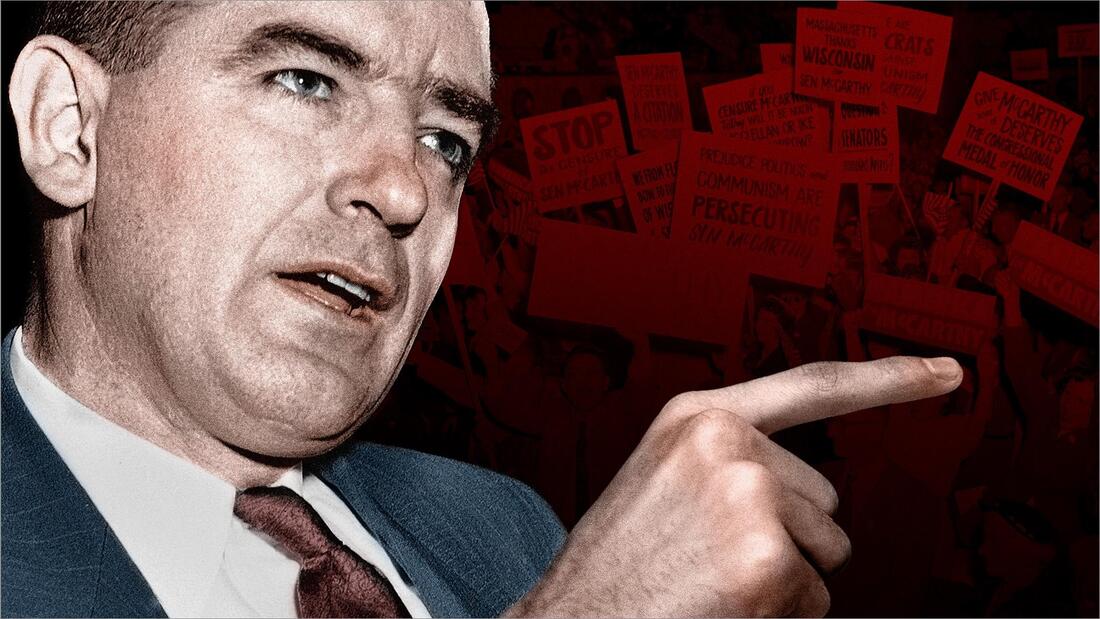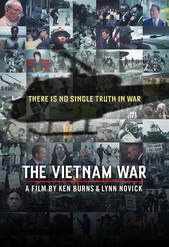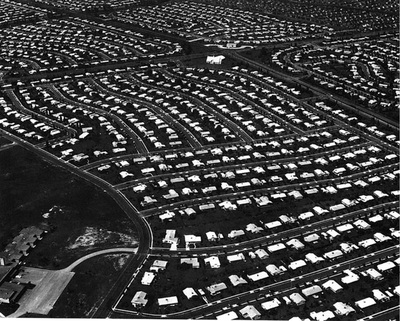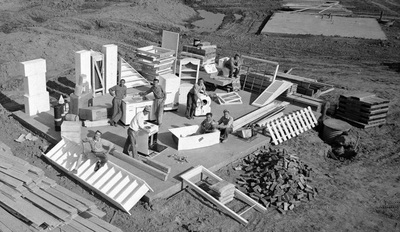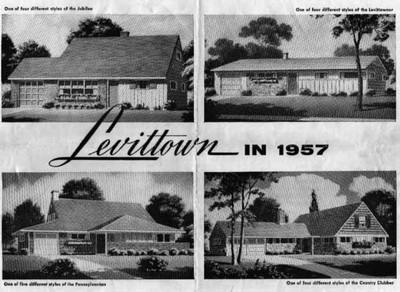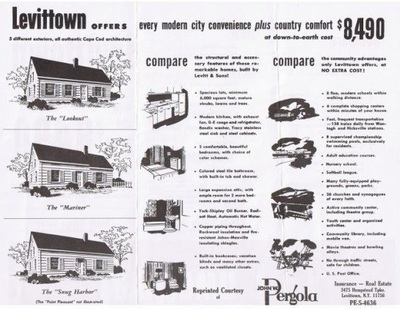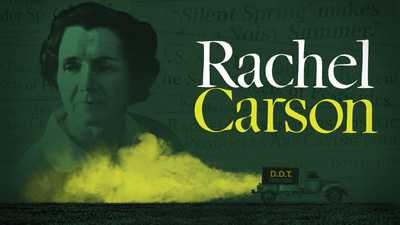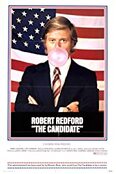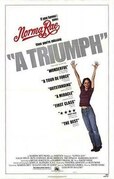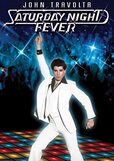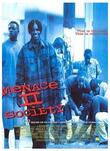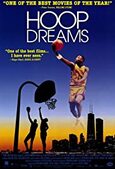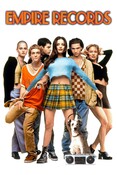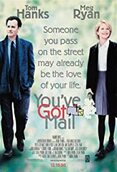ODE
HS AMERICAN HISTORY
(UNITED STATES)
1877 to the present
This course examines the history of the United States of America from 1877 to the present. The federal republic has withstood challenges to its national security and expanded the rights and roles of its citizens. The episodes of its past have shaped the nature of the country today and prepared it to attend to the challenges of tomorrow. Understanding how these events came to pass and their meaning for today’s citizens is the purpose of this course. The concepts of historical thinking introduced in earlier grades continue to build with students locating and analyzing primary and secondary sources from multiple perspectives to draw conclusions.
HISTORY: America the Story of Us
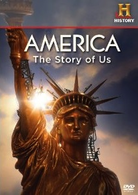
America The Story of Us is an epic 12-hour television event that tells the extraordinary story of how America was invented. With highly realistic CGI animation, dramatic recreations and thoughtful insights from some of America’s most respected artists, business leaders, academics and intellectuals, it is the first television event in nearly 40 years to present a comprehensive telling of America’s history. Elaborate, ambitious and cinematic, America The Story of Us will take you into the moments when Americans harnessed technology to advance human progress, from the rigors of linking the continent by transcontinental railroad–the internet of its day–to triumphing over vertical space through the construction of steel structured buildings to putting a man on the moon. It is an intensive look at the people, places and things that have shaped our nation, and the tough and thrilling adventure that is America’s 400-year history.
|
America the Story of Us | History
|
America the Story of Us: Trailer | History
The extraordinary story of how America was invented, looking at the moments where technology overcame the environment - from the rigors of linking the continent by transcontinental roads and railways - the internet of its day - to triumphing over vertical space from steel structured buildings to putting a man on the moon. Own America: The Story of Us on DVD or Blu-ray! http://www.shophistorystore.com/
|
Hillsdale College
The Great American Story: A Land of HopeThis course explores the history of America as a land of hope founded on high principles. In presenting the great triumphs and achievements of our nation’s past, as well as the shortcomings and failures, it offers a broad and unbiased study of the kind essential to the cultivation of intelligent patriotism.
The Great American Story
|
American Heritage: From Colonial Settlement to the Current DayOn July 4, 1776, America—acting under the authority of “the Laws of Nature and of Nature’s God”—declared its independence from Great Britain. The new nation, founded on the principle that “all Men are created equal,” eventually grew to become the most prosperous and powerful nation in the world. This course will consider the history of America from the colonial era to the present, including major challenges to the founders’ principles.
|
Historical Thinking and Skills
Alternative Courses of Action
1. Historical events provide opportunities to examine alternative courses of action.
By examining alternative courses of action, students can consider the possible consequences and outcomes of moments in history. It also allows them to appreciate the decisions of some individuals and the actions of some groups without putting 21st century values and interpretations on historic events.
How might the history of the United States be different if the participants in historical events had taken different courses of action? What if Democratic Party officeholders had not been restored to power in the South after Reconstruction, the U.S. had not engaged in the Spanish-American War or the U.S. had joined the League of Nations? What if the federal government had not used deficit spending policies during the Great Depression, Truman had not ordered atomic bombs dropped on Japan or African Americans had not protested for civil rights in the 1950s and 1960s?
By examining alternative courses of action, students can consider the possible consequences and outcomes of moments in history. It also allows them to appreciate the decisions of some individuals and the actions of some groups without putting 21st century values and interpretations on historic events.
How might the history of the United States be different if the participants in historical events had taken different courses of action? What if Democratic Party officeholders had not been restored to power in the South after Reconstruction, the U.S. had not engaged in the Spanish-American War or the U.S. had joined the League of Nations? What if the federal government had not used deficit spending policies during the Great Depression, Truman had not ordered atomic bombs dropped on Japan or African Americans had not protested for civil rights in the 1950s and 1960s?
Primary and Secondary Sources
2. The use of primary and secondary sources of information includes an examination of the credibility of each source.
The use of primary and secondary sources in the study of history includes an analysis of their credibility – that is, whether or not they are believable. This is accomplished by checking sources for:
Resource: History Matters
Resource: Primary Sources at Yale
Resource: The National Archives
The use of primary and secondary sources in the study of history includes an analysis of their credibility – that is, whether or not they are believable. This is accomplished by checking sources for:
- The qualifications and reputation of the author;
- Agreement with other credible sources;
- Perspective or bias of the author (including use of stereotypes);
- Accuracy and internal consistency; and
- The circumstances in which the author prepared the source.
Resource: History Matters
Resource: Primary Sources at Yale
Resource: The National Archives
Theses
3. Historians develop theses and use evidence to support or refute positions.
Resource: Incorporating Evidence Into Your Essay
Resource: NEH, EDSITEment - Eyewitness to History
- Historians are similar to detectives. They develop theses and use evidence to create explanations of past events. Rather than a simple list of events, a thesis provides a meaningful interpretation of the past by telling the reader the manner in which historical evidence is significant in some larger context.
- The evidence used by historians may be generated from artifacts, documents, eyewitness accounts, historical sites, photographs and other sources. Comparing and analyzing evidence from various sources enables historians to refine their explanations of past events.
- Historians cite their sources and use the results of their research to support or refute contentions made by others.
Resource: Incorporating Evidence Into Your Essay
Resource: NEH, EDSITEment - Eyewitness to History
Standard Essays - OverviewThis is part 1 of an 8 part series on how to write standard essays in history. Each video covers a different step in the writing process. You can watch them all consecutively or come back to review individual steps as needed. Every document I reference is available for download below.
Documents Standard Essay Outline: http://tinyurl.com/k9h98x9 Standard Essay Processor: http://tinyurl.com/mheor3t Sample Standard Essay Processor: http://tinyurl.com/kpd5a7o Sample Standard Essay Response: http://tinyurl.com/kve3d5z |
Standard Essays - Step 1: Understand the QuestionStandard Essays - Step 2: Brainstorm and ResearchStandard Essays - Step 3: Find Patterns in the EvidenceStandard Essays - Step 4: Write Your Claim SentencesStandard Essays - Step 5: Write Your ThesisStandard Essays - Step 6: Fill Out Your Evidence and LogicStandard Essays - Step 7: Write Your Essay |
Cause, Effect, Sequence & Correlation
4. Historians analyze cause, effect, sequence and correlation in historical events, including multiple causation and long- and short-term causal relations.
- When studying a historical event or person in history, historians analyze cause-and-effect relationships. For example, to understand the impact of the Great Depression, an analysis would include its causes and effects.
- An analysis also would include an examination of the sequence and correlation of events. How did one event lead to another? How do they relate to one another?
- An examination of the Great Depression would include the Federal Reserve Board’s monetary policies in the late 1920s as a short-term cause and the decline in demand for American farm goods after World War I as a long-term factor contributing to the economic downturn.
Face It - Facing History and OurselvesFacing History and Ourselves empowers teachers and students to think critically about history and to understand the impact of their choices.
History is about choices. Big choices. Little choices. Tragic choices. What if people were capable of making better choices? Facing History and Ourselves combats racism, antisemitism, and prejudice and nurtures democracy through education programs worldwide. www.facinghistory.org |
Cause and Effect in History Explained
Quickly gain an understanding of what 'causes' and 'consequences' are in history. For more information: https://www.historyskills.com/histori..
|
Historic Documents
American Historic Documents
5. The Declaration of Independence reflects an application of Enlightenment ideas to the grievances of British subjects in the American colonies.
- The Declaration of Independence opens with a statement that the action the American colonies were undertaking required an explanation. That explanation begins with a brief exposition of Enlightenment thinking, particularly natural rights and the social contract, as the context for examining the recent history of the colonies.
- The document includes a list of grievances the colonists have with the King of Great Britain and Parliament as a justification for independence. The grievances refer to a series of events since the French and Indian War which the colonists deemed were tyrannical acts and destructive of their rights.
- The Declaration of Independence ends with a clear statement that the political bonds between the colonies and Great Britain are ended. Independence is declared as an exercise of social contract thought.
Read Articles About the Declaration:
- The article "The Declaration of Independence: A History," provides a detailed account of the Declaration, from its drafting through its preservation today at the National Archives.
- "The Stylistic Artistry of the Declaration of Independence" by Stephen Lucas. By closely examining its language, this perceptive article sheds light on the Declaration as a work of literature and of persuasion. From Prologue, Spring 1990.
- The Virginia Declaration of Rights strongly influenced Thomas Jefferson in writing the first part of the Declaration of Independence. It later provided the foundation for the Bill of Rights.
TedEd: What you might not know about the Declaration of Independence - Kenneth C. DavisIn June 1776, a little over a year after the start of the American Revolutionary War, the US Continental Congress huddled together in a hot room in Philadelphia to talk independence. Kenneth C. Davis dives into some of the lesser known facts about the process of writing the Declaration of Independence and questions one very controversial omission.
View full lesson: http://ed.ted.com/lessons/what-you-mi... Understand the Declaration of Independence in 5 Minutes (Freedomists Show Episode 5)
In this video you'll gain a basic understanding of what the Declaration of Independence is, why it was written, and what it says.
|
Freedom According to the Declaration Of Independence | The Story of Us
Historian Patrick Spero and Morgan Freeman discuss the first draft of the Declaration of Independence, and how one small change altered its meaning.
Reading of the Declaration of IndependenceA host of celebrities including Mel Gibson, Whoopie Goldberg, and Michael Douglas perform a live reading of the Declaration of Independence in Independence Hall, Philadelphia, PA. For more information and teaching materials, check out: http://doiroadtrip.wordpress.com/
|
The Northwest Ordinance
|
6. The Northwest Ordinance addressed a need for government in the Northwest Territory and established precedents for the future governing of the United States.
As Ohio country settlement progressed in the Connecticut Western Reserve and the Virginia Military District, and with the enactment of the Land Ordinance of 1785, the Congress of the United States recognized a need for governing land acquired in the Treaty of Paris. The Northwest Ordinance provided the basis for temporary governance as a territory and eventual entry into the United States as states. The Northwest Ordinance also set some precedents that influenced how the United States would be governed in later years. New states were to be admitted “into the Congress of the United States, on an equal footing with the original States.” This provision was continued in later years and it meant that there would be no colonization of the lands as there had been under Great Britain. “Schools and the means of education” were to be encouraged. This wording reinforced the provision in the Land Ordinance of 1785 allocating one section of each township for the support of schools and established a basis for national aid for education. Basic rights of citizenship (e.g., religious liberty, right to trial by jury, writ of habeas corpus) were assured. These assurances were precursors to the Bill of Rights to the U.S. Constitution. Slavery was prohibited in the Northwest Territory. This provision was later included in the Constitution as Amendment 13. State governments were to be republican in structure. This provision was repeated in the U.S. Constitution. Key components of a republic:
Resource: Our Documents-Transcript of Northwest Ordinance (1787) Resource: History.com - Congress enacts the Northwest Ordinance Resource: LOC, Primary Documents in American History - Northwest Ordinance Resource: Ohio History Central - Northwest Ordinace Jefferson Papers
|
The Northwest Ordinance
In 1787, Congress adopts a plan called The Northwest Ordinance which calls for new states to be developed in the Ohio region.
The Articles of Confederation and the Northwest Ordinance |
The Articles of Confederation
7. Problems facing the national government under the Articles of Confederation led to the drafting of the Constitution of the United States. The framers of the Constitution applied ideas of Enlightenment in conceiving the new government.
The national government, under the Articles of Confederation, faced several critical problems. Some dealt with the structure of the government itself. These problems included weak provisions for ongoing management of national affairs (a lack of a separate executive branch), a limited ability to resolve disputes arising under the Articles (a lack of a separate judicial branch) and stiff requirements for passing legislation and amending the Articles. National issues facing the government included paying the debt from the Revolutionary War, the British refusal to evacuate forts on U.S. soil, the Spanish closure of the Mississippi River to American navigation and state disputes over land and trade. Economic problems in the states led to Shays’ Rebellion.
The Constitution of the United States strengthened the structure of the national government. Separate executive and judicial branches were established. More practical means of passing legislation and amending the Constitution were instituted. The new government would have the ability to address the issues facing the nation. Powers to levy taxes, raise armies and regulate commerce were given to Congress. The principle of federalism delineated the distribution of powers between the national government and the states.
The Constitution of the United States was drafted using Enlightenment ideas to create a workable form of government. The Preamble and the creation of a representative government reflect the idea of the social contract. Articles I – III provide for a separation of powers in government. Article I also provides some limited protection of rights.
Resource: History.com - The Enlightenment
Resource: National Constitution Center
Resource: LOC, Primary Documents in American History - The Articles of Confederation
Resource: Ourdocuments.gov - Articles of Confederation
Resource: History.com - Articles of Confederation
Resource: DoS - Milestones: 1776-1783
The national government, under the Articles of Confederation, faced several critical problems. Some dealt with the structure of the government itself. These problems included weak provisions for ongoing management of national affairs (a lack of a separate executive branch), a limited ability to resolve disputes arising under the Articles (a lack of a separate judicial branch) and stiff requirements for passing legislation and amending the Articles. National issues facing the government included paying the debt from the Revolutionary War, the British refusal to evacuate forts on U.S. soil, the Spanish closure of the Mississippi River to American navigation and state disputes over land and trade. Economic problems in the states led to Shays’ Rebellion.
The Constitution of the United States strengthened the structure of the national government. Separate executive and judicial branches were established. More practical means of passing legislation and amending the Constitution were instituted. The new government would have the ability to address the issues facing the nation. Powers to levy taxes, raise armies and regulate commerce were given to Congress. The principle of federalism delineated the distribution of powers between the national government and the states.
The Constitution of the United States was drafted using Enlightenment ideas to create a workable form of government. The Preamble and the creation of a representative government reflect the idea of the social contract. Articles I – III provide for a separation of powers in government. Article I also provides some limited protection of rights.
Resource: History.com - The Enlightenment
Resource: National Constitution Center
Resource: LOC, Primary Documents in American History - The Articles of Confederation
Resource: Ourdocuments.gov - Articles of Confederation
Resource: History.com - Articles of Confederation
Resource: DoS - Milestones: 1776-1783
What Were the Articles of Confederation? | History
Before the U.S. Constitution was the law of the land, there were the Articles of Confederation. Find out why they didn't last long.
The Articles of Confederation
Nathan Dorn discusses the Articles of Confederation and Perpetual Union, the first Constitution of the United States. A 1777 printing of these articles is part of the Law Library of Congress' rare book collection.
What Were the Articles of Confederation? | America: Facts vs. FictionThe Articles of Confederation proved to be more trouble than help with individual states all pushing their interests and agendas, to the point of threatening the country as a whole. | For more, visit http://military.discovery.com/tv-show...
|
The Articles of Confederation | BRI's Homework Help Series
Have you ever looked at your teacher with a puzzled face when they explain history? I know we have. In our new Homework Help Series we break down history into easy to understand 5 minute videos to support a better understanding of American History. In our eighth episode, we tackle the Articles of Confederation and the need for a Constitution.
The Articles of Confederation
The Articles of Confederation suited the goals of the Americans when they were fighting for freedom from the monarchy. Yet, these documents, which favored state's rights over federal power, are inadequate after the Revolution when a strong central government became necessary.
The Need to Amend the Articles of Confederation
The American Revolution exposes the weakness of the Articles of Confederation and the need for a new national constitution.
Franklin Papers
|
The Federalists and Anti-Federalists
8. The Federalist Papers and the Anti-Federalist Papers structured the national debate over the ratification of the Constitution of the United States.
The Constitution of the United States represented a significant departure from the Articles of Confederation. The document required ratification by nine states for the national government to be established among the ratifying states.
Proponents and opponents of the Constitution attempted to sway the deliberations of the ratifying conventions in the states. The proponents became known as Federalists and the opponents as Anti-Federalists.
New York was a pivotal state in the ratification process and Federalists prepared a series of essays published in that state’s newspapers to convince New York to support the Constitution. These essays have become known as the Federalist Papers and they addressed issues such as the need for national taxation, the benefits of a strong national defense, the safeguards in the distribution of powers and the protection of citizen rights. What has become known as the Anti-Federalist Papers is a collection of essays from a variety of contributors. While not an organized effort as the Federalist Papers were, the Anti-Federalist Papers raised issues relating to the threats posed by national taxation, the use of a standing army, the amount of national power versus state power and the inadequate protection of the people’s rights
Resource: The Library of Congress - The Federalist Papers
Resource: National Endowment for the Humanities – EDSITEment!
The Constitution of the United States represented a significant departure from the Articles of Confederation. The document required ratification by nine states for the national government to be established among the ratifying states.
Proponents and opponents of the Constitution attempted to sway the deliberations of the ratifying conventions in the states. The proponents became known as Federalists and the opponents as Anti-Federalists.
New York was a pivotal state in the ratification process and Federalists prepared a series of essays published in that state’s newspapers to convince New York to support the Constitution. These essays have become known as the Federalist Papers and they addressed issues such as the need for national taxation, the benefits of a strong national defense, the safeguards in the distribution of powers and the protection of citizen rights. What has become known as the Anti-Federalist Papers is a collection of essays from a variety of contributors. While not an organized effort as the Federalist Papers were, the Anti-Federalist Papers raised issues relating to the threats posed by national taxation, the use of a standing army, the amount of national power versus state power and the inadequate protection of the people’s rights
Resource: The Library of Congress - The Federalist Papers
Resource: National Endowment for the Humanities – EDSITEment!
HISTORY TALKS: Federalist Papers - New Ideas for a New NationIn a series of newspaper articles Alexander Hamilton, John Jay and James Madison explained the value of the new constitution that replaced the Articles of Confederation.
James Madison, the Federalist PapersBefore serving as the fourth President of the United States, James Madison made a major contribution to American political thought through his role in writing the Federalist Papers.
|
The Federalists versus the Anti-Federalists
This lesson presents the opposing viewpoints of the Federalists and Anti-Federalists during the race to ratify the Constitution.
Why did Federalists and Anti-Federalists disagree about representation?
|
The Bill of Rights
|
9. The Bill of Rights is derived from English law, ideas of the Enlightenment, the experiences of the American colonists, early experiences of self-government and the national debate over the ratification of the Constitution of the United States.
The Bill of Rights to the Constitution of the United States is derived from several sources. These range from the English heritage of the United States to the debates over the ratification of the Constitution. English sources for the Bill of Rights include the Magna Carta (1215) and the Bill of Rights of 1689. The Magna Carta marked a step toward constitutional protection of rights and recognized trial by jury. The English Bill of Rights affirmed many rights including the right to habeas corpus and it protected against cruel punishments. Enlightenment ideas about natural rights of life, liberty and property were becoming widespread as American colonists were experiencing what they saw as infringements upon their rights. The Quartering Act of 1765 was seen as an infringement on property rights. The Massachusetts Government Act placed severe limitations on the colonists’ ability to assemble in their town meetings. The Enlightenment ideas and British policies became focal points of the Declaration of Independence in 1776. As the American people began to govern themselves, they incorporated individual rights in governing documents. The Virginia Declaration of Rights (1776) included protections for the press, religious exercise and the accused. Other colonies also included individual rights as part of their constitutions. The national government, under the Articles of Confederation, enacted the Northwest Ordinance of 1787, which provided for religious liberty, due process, protections for the accused and property rights. Resource: The Magna Carta Resource: The British Library Resource: National Archives: The full text of the United States Bill of Rights Resource: LOC - Primary Documents in American History, The Bill of Rights Resource: Teaching American History - The Bill of Rights Resource: The Federalist Papers, Opposition to the Bill of Rights - Alexander Hamilton The Bill of Rights Institute
Established in September 1999, the Bill of Rights Institute is a 501(c)(3) non-profit educational organization that works to engage, educate, and empower individuals with a passion for the freedom and opportunity that exist in a free society. The Institute develops educational resources and programs for a network of more than 50,000 educators and 70,000 students nationwide.
Constitution Hall Pass: The Bill of Rights (Constitution Day 2014)“Constitution Day 2014: The Bill of Rights” provides a behind-the-scenes look at how these 10 amendments were created and interpreted: - DISCOVER the roots of the Bill of Rights in the Revolutionary War and the state constitutions; - VISIT the Constitutional Convention to listen in on the debates about a bill of rights; - HEAR the voices of the ratifying conventions as they influenced James Madison’s work in writing the Bill of Rights; - LEARN what the Bill of Rights actually says—and how long it’s taken to make those rights a reality; - EXPLORE the process of judicial review and the ways citizens use the courts to bring the Bill of Rights to life.
SHOW LESS
|
What is Magna Carta?Why is this old piece of parchment considered to be such a powerful symbol of our rights and freedoms? Narrated by Monty Python’s Terry Jones, this animation takes you back to medieval times, when England under the reign of Bad King John. It asks why Magna Carta was originally created and what it meant to those living in the 13th century.
How the founders differed from the English Bill of Rights
Michael Barone is a senior fellow at the American Enterprise Institute and author of "Our First Revolution: The Remarkable British Upheaval That Inspired America's Founding Fathers".
TED-Ed: A 3-minute guide to the Bill of Rights - Belinda StutzmanView full lesson: http://ed.ted.com/lessons/a-3-minute-...
Daily, Americans exercise their rights secured by the Constitution. The most widely discussed and debated part of the Constitution is known as the Bill of Rights. Belinda Stutzman provides a refresher course on exactly what the first ten amendments grant each and every American citizen. Lesson by Belinda Stutzman, animation by Jacques Khouri. The Bill of Rights at the Schoolhouse Gate
Do the rights guaranteed by the Bill of Rights apply to public schools? Throughout their schooling, students are taught about the rights guaranteed by the United States Constitution. Curiously, they are often taught these rights through case studies that seem distant from their own lived experiences and without reference to limitations on these rights in the schoolhouse setting. Join the National Archives and iCivics for a timely and engaging discussion about the application of the Bill of Rights in schools.
|
Reconstruction
Reconstruction and 1876: Crash Course US History #22In which John Green teaches you about Reconstruction. After the divisive, destructive Civil War, Abraham Lincoln had a plan to reconcile the country and make it whole again. Then he got shot, Andrew Johnson took over, and the disagreements between Johnson and Congress ensured that Reconstruction would fail. The election of 1876 made the whole thing even more of a mess, and the country called it off, leaving the nation still very divided. John will talk about the gains made by African-Americans in the years after the Civil War, and how they lost those gains almost immediately when Reconstruction stopped. You'll learn about the Freedman's Bureau, the 14th and 15th amendments, and the disastrous election of 1876. John will explore the goals of Reconstruction, the successes and ultimate failure, and why his alma mater Kenyon College is better than Raoul's alma mater NYU. Support CrashCourse on Patreon: https://www.patreon.com/crashcourse
Resource: Jensen's Guide to Reconstruction History, 1861-1877
Resource: Proclamation Declaring the Insurrection at an End Resource: Mr. Lincoln and Freedom - Reconstruction Resource: Reconstruction Historiography: A Source of Teaching Ideas Resource: Children in History - The American Civil War - Reconstruction Resource: Open Yale Courses - HIST 119: The Civil War and Reconstruction Era, 1845-1877 Resource: The History Channel - Reconstruction |
Sound Smart: The 15th Amendment | History
Historian Yohuru Williams give a brief rundown of the history of the 15th Amendment, which outlawed votings rights discrimination after the Civil War.
Reconstruction: The Good, the Bad and the Ugly
The period immediately following the Civil War (1865 -1877) is known as Reconstruction. Its promising name belies what turned out to be the greatest missed opportunity in American history. Where did we go wrong? And who was responsible? Renowned American history professor Allen Guelzo has the surprising answers in this eye-opening video.
|
Modern American History Series:
ABC News: The Century, America's Time
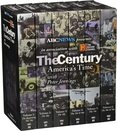
It has been a century like no other. And ABC news is proud to present this extraordinary visual encyclopedia of America's last one hundred years. ABC News produced this 15-part series of documentaries on the 20th century and the rise of the United States as a superpower. that originally aired on the History Channel in April 1999. Unprecedented in scope The century: America's time recounts the defining moments, people, and trends that have shaped our nation.
Narrated by Peter Jennings, the 15 part series covers each decade is 6 volumes.
Narrated by Peter Jennings, the 15 part series covers each decade is 6 volumes.
|
Volume 1
Volume 2
|
Volume 3
Volume 4
|
Volume 5
Volume 6
|
The Century 1st Edition
by Peter Jennings (Author), Todd Brewster (Author) The Century presents history as it was lived, and as it will be remembered for the next hundred years. Here is a keepsake volume destined to be an essential part of every family's library: an epic journey through the last hundred years, whose heroes are our grandparents, our parents, ourselves. ISBN-13: 978-0385483278 ISBN-10: 0385483279 |
PBS: People's Century 1900-1999
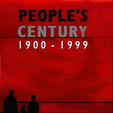
On the cusp of the new millennium, People's Century pauses to look back, inviting the people who participated in the great events of our century to reflect on what we've accomplished, where we've failed, how things have -- and haven't -- changed, where we've been, how far we've come and how far we still have to go. From the front lines of war to the battle against racism, the fight for freedom to the struggle for equality: Those who where there tell the stories of our times as People's Century celebrates the human spirit -- and history on a human scale.
The People's Century series represents years of exhaustive research conducted around the world. And, whatever the subject matter, People's Century maintains its commitment to documenting the extraordinary events of the century through the revealing personal testimony of the people who experienced them firsthand -- "no pundits, no academics appear on camera," reminds series executive producer, Zvi Dor-Ner -- an approach unique to this global, historical documentary series. The twentieth century has been one of unrivaled extremes -- from the height of human accomplishment to the greatest depths of inhumanity. It is also a history defined equally by unencumbered intellectual achievement and astonishing ignorance, war and peace, democracy and dictatorship, by individual resolution and mass revolution. People's Century offers a powerful and personal new perspective on this past, making "history and television for citizens of the twentieth century," says Dor-Ner, "and for the children of the twenty-first." |
About this Web Site
Information for teachers as well as the general audience About the Series Series overview, broadcast schedule, program descriptions, biographies Your Stories Read and/or submit personal or ancestral accounts relevant to the topics covered in People's Century Timeline See the relative time span of each episode and highlights of signifcant world events Thematic Overview An interactive overview that provides quick access to information about the programs Teacher's Guide Discussion questions to help students in viewing the programs, as well as a classroom activity |
|
Episodes:
Age of Hope (1900) Optimism reigns as the new century begins Killing Fields (1916) Marching to glory, soldiers face death on an industrial scale in a ghastly global war Red Flag (1917) Communism brings hope-and horrors-to Russia's millions Lost Peace (1919) The hope for a new world order On the Line (1926) Mass production forever alters the lives of workers and consumers Great Escape (1927) The world forgets its troubles and falls in love with the movies Breadline (1929) Economic depression triggers unemployment on a global scale Sporting Fever (1930) Fans root for the home team in a sports craze that pushes nationalism to new levels Master Race (1933) Nazism overtakes German society Total War (1939) Civilians become targets-contributing to the war effort with their labor and their lives Fallout (1945) Nuclear energy is unleashed Brave New World (1945) A "cold" war embroils the US and the Soviet Union in a contest of ideologies |
Freedom Now (1947)
Colonial rule is overthrown in Asia and Africa Boomtime (1948) Post-war prosperity transforms lifestyles and cultural values in the United States and abroad Asia Rising (1951) From the ashes of war, Japan and Korea rise to economic prominence Living Longer (1952) Medical advances further the fight against disease Endangered Planet (1959) Runaway growth brings prosperity at a price Skin Deep (1960) Racial oppression is challenged in the United States and South Africa Picture Power (1963) Television unexpectedly transforms society, culture, and politics Great Leap (1965) China yields to Chairman Mao Young Blood (1968) A new generation challenges the Establishment Half the People (1969) At home and at work, women fight for equal rights Guerrilla Wars (1973) Revolution succeeds through guerrilla warfare God Fights Back (1979) Religious fundamentalism flourishes in the East and West People Power (1991) Communist rule crumbles in the Soviet Union Fast Forward (1999) New technologies connect the world-while age-old rivalries threaten the New World Order |
Industrialization and Progressivism (1877-1920)
Urbanization
10. The rise of corporations, heavy industry, mechanized farming and technological innovations transformed the American economy from an agrarian to an increasingly urban industrial society.
Industrialization in the United States in the late 19th and early 20th centuries was characterized by the rise of corporations and heavy industry, which transformed the American economy. It marked a shift from a predominance of agricultural workers to a predominance of factory workers. It marked a shift from rural living to urban living, with more people living in crowded and unsanitary conditions.
Mechanized farming also transformed the American economy. Production was made more efficient as machines replaced human labor.
New technologies (e.g., mechanized assembly line, electric motors) made factory production more efficient and allowed for larger industrial plants. Some of the technological innovations that transformed the American economy in the late 19th and early 20th centuries include the telephone, phonograph, incandescent light bulb, washing machine, skyscraper, automobile and airplane.
Industrialization in the United States in the late 19th and early 20th centuries was characterized by the rise of corporations and heavy industry, which transformed the American economy. It marked a shift from a predominance of agricultural workers to a predominance of factory workers. It marked a shift from rural living to urban living, with more people living in crowded and unsanitary conditions.
Mechanized farming also transformed the American economy. Production was made more efficient as machines replaced human labor.
New technologies (e.g., mechanized assembly line, electric motors) made factory production more efficient and allowed for larger industrial plants. Some of the technological innovations that transformed the American economy in the late 19th and early 20th centuries include the telephone, phonograph, incandescent light bulb, washing machine, skyscraper, automobile and airplane.
The Industrial Economy: Crash Course US History #23In which John Green teaches you about the Industrial Economy that arose in the United States after the Civil War. You know how when you're studying history, and you're reading along and everything seems safely in the past, and then BOOM you think, "Man, this suddenly seems very modern." For me, that moment in US History is the post-Reconstruction expansion of industrialism in America. After the Civil War, many of the changes in technology and ideas gave rise to this new industrialism. You'll learn about the rise of Captains of Industry (or Robber Barons) like Cornelius Vanderbilt, Andrew Carnegie, John D Rockefeller, and JP Morgan. You'll learn about trusts, combinations, and how the government responded to these new business practices. All this, plus John will cover how workers reacted to the changes in society and the early days of the labor movement. You'll learn about the Knights of Labor and Terence Powderly, and Samuel Gompers and the AFL. As a special bonus, someone gets beaten with a cane. AGAIN. What is it with American History and people getting beaten with canes?
|
The New York Times: Tenement MemoriesRita Ascione is one of the last living residents of the Lower East Side building that is now the Tenement Museum. She recently returned with her daughter, Valerie Carmody, to see her old apartment.
Read the story here: http://nyti.ms/1x0GHsF Business Insider: A Trip Through The Tenement Museum In New York CityTake a trip through the Tenement Museum in New York City. This video was originally produced as a Facebook Live segment.
|
Industrialization
|
11. The rise of industrialization led to a rapidly expanding workforce. Labor organizations grew amidst unregulated working conditions and violence toward supporters of organized labor.
The rise of industrialization in the United States in the late 19th and early 20th centuries increased the demand for workers. With this demand, immigrants came from other countries and Americans migrated from other parts of the United States to take jobs in industrial centers. As a result of the changing nature of work, some members of the working class formed labor organizations (e.g., American Railway Union, American Federation of Labor, Industrial Workers of the World, United Mine Workers of America) to protect their rights. They sought to address issues such as working conditions, wages and terms of employment. Labor organizations also grew due to the violence toward supporters of organized labor (e.g., Great Railroad Strike, Haymarket Riot, Homestead Strike, Pullman Strike). Resource: Standford University - Spatial History Project Railway Union, 1893-1894 Resource: AFL-CIO, History Resource: IWW, History Resource: UMWA, History Resource: Maryland State Archives - The Strike of 1877 Resource: West Virginia Archives & History B&O Railroad Strike of 1877 Resource: University of Pittsburg - The Great Railroad Strike of 1877 Resource: Catskill Archive - The Great Strike, Harper's Weekly August 11, 1877 Resource: Chicago Historical Society - The Haymarket Affair Digital Collection Resource: Illinois Labor History Society - The Haymarket Affair Resource: University of Missouri - The Haymarket Riot Trial Resource: Northern Illinois University - The Haymarket Bomb Resource: The Battle of Homestead Foundation Resource: History Matters - Broken Spirits: Letters on the Pullman Strike Resource: Northern Illinois University - The Pullman Strike Simple History: Who were the Richest Tycoons in America?Labor Day's violent beginningsThe bloody Pullman strike in 1894 spurred the national holiday that recognizes American workers
|
History through HollywoodTed-Ed: Why do Americans and Canadians celebrate Labor Day? -Kenneth C. DavisView full lesson: http://ed.ted.com/lessons/why-do-amer...
In the United States and Canada, the first Monday of September is a federal holiday, Labor Day. Originally celebrated in New York City's Union Square in 1882, Labor Day was organized by unions as a rare day of rest for the overworked during the Industrial Revolution. Kenneth C. Davis illustrates the history of Labor Day from Union Square to today. |
HISTORY: The Men Who Built America
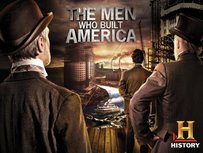
John D. Rockefeller, Cornelius Vanderbilt, Andrew Carnegie, Henry Ford and J.P. Morgan rose from obscurity and in the process built modern America. Their names hang on street signs, are etched into buildings and are a part of the fabric of history. These men created the American Dream and were the engine of capitalism as they transformed everything they touched in building the oil, rail, steel, shipping, automobile and finance industries. Their paths crossed repeatedly as they elected presidents, set economic policies and influenced major events of the 50 most formative years this country has ever known. From the Civil War to the Great Depression and World War I, they led the way.
www.history.com/shows/men-who-built-america
www.history.com/shows/men-who-built-america
Episode 1: A New War Begins
Out of the turmoil of the Civil War, America enters an age of enlightenment that will change the landscape of the country forever. The growth is driven by five insightful men who will change the world forever.
Out of the turmoil of the Civil War, America enters an age of enlightenment that will change the landscape of the country forever. The growth is driven by five insightful men who will change the world forever.
Episode 2: Bloody Battles
As it recovers from the Civil War, America undertakes the largest building phase of the country's history. While much of the growth is driven by railroads and oil, it's built using steel.
As it recovers from the Civil War, America undertakes the largest building phase of the country's history. While much of the growth is driven by railroads and oil, it's built using steel.
Episode 3: Changing the Game
The steel and oil have forever changed the face of America, but they are just the beginning. JP Morgan arrives on the scene and expedites growth through finance.
The steel and oil have forever changed the face of America, but they are just the beginning. JP Morgan arrives on the scene and expedites growth through finance.
Episode 4: When One Ends, Another Begins
Railroads, oil, steel and electricity have all been harnessed in less than 50 years, but the face of America is changing and will never be the same.
Railroads, oil, steel and electricity have all been harnessed in less than 50 years, but the face of America is changing and will never be the same.
Westward Expansion
Westward Expansion: Crash Course US History #24In which John Green teaches you about the Wild, Wild, West, which as it turns out, wasn't as wild as it seemed in the movies. When we think of the western expansion of the United States in the 19th century, we're conditioned to imagine the loner. The self-reliant, unattached cowpoke roaming the prairie in search of wandering calves, or the half-addled prospector who has broken from reality thanks to the solitude of his single-minded quest for gold dust. While there may be a grain of truth to these classic Hollywood stereotypes, it isn't a very big grain of truth. Many of the pioneers who settled the west were family groups. Many were immigrants. Many were major corporations. The big losers in the westward migration were Native Americans, who were killed or moved onto reservations. Not cool, American pioneers.
|
U.S. Population Density (1790–2010) - Westward ExpansionThe animated map of population density, made using Jonathan Schroeder's county-level decadal estimates. Populations for intermediate years was interpolated by cubic splines to log-density; essentially, that means that it assumes a smooth change in the rate of growth for each county over time. Westward Expansion summary: The story of the United States has always been one of westward expansion, beginning along the East Coast and continuing, often by leaps and bounds, until it reached the Pacific-what Theodore Roosevelt described as "the great leap Westward." The acquisition of Hawaii and Alaska, though not usually included in discussions of Americans expanding their nation westward, continued the practices established under the principle of Manifest Destiny.
America the Story of Us: Gold Rush | History
Discover how the Gold Rush led to the creation of California. Own America: The Story of Us
|
The Progressive Era
Immigration & Migration
|
12. Immigration, internal migration and urbanization transformed American life.
Mass immigration at the turn of the 20th century made the country more diverse and transformed American life by filling a demand for workers, diffusing new traits into the American culture and impacting the growth of cities. Many people left their farms for the cities seeking greater job opportunities. The Great Migration marked the mass movement of African Americans who fled the rural South for the urban North. They sought to escape prejudice and discrimination and secure better-paying jobs. They helped transform northern cities economically (e.g., as workers and consumers) and culturally (e.g., art, music, literature). Urbanization transformed the physical nature of cities. Central cities focused on industry and commerce. Buildings became taller and tenement buildings provided housing for working families. Cities acquired additional land as they expanded outward. The crowding of cities led to increased crime with the development of gangs. Improvements in transportation (e.g., trolleys, automobiles) facilitated the development of suburbs. A growing middle class could easily commute between residential areas and the central cities for business and recreation. America's Sources of Immigration (1850-Today)A state-by-state look at the history of U.S. immigration, showing the leading country of origin for newcomers in each territory, by decade.
Business Insider: Animated Map Shows History Of Immigration To The USIn 1607, the English established their first permanent settlement in Jamestown, Virginia. Over the coming centuries, millions of people from around the globe were attracted to this New World that came to be the US for a chance at a better life. Today, more than 1 in 8 Americans are immigrants, and almost all are descendants of those born in foreign lands.
|
History through Hollywood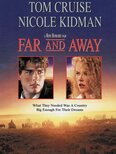
Far and Away (1992)
A young Irish couple flee to the States, but subsequently struggle to obtain land and prosper freely. Director: Ron Howard Stars: Tom Cruise, Nicole Kidman, Thomas Gibson 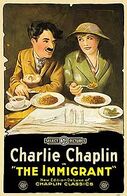
The Immigrant (1917)
Charlie is an immigrant who endures a challenging voyage and gets into trouble as soon as he arrives in America. Director: Charles Chaplin Stars: Charles Chaplin, Edna Purviance, Eric Campbell, Albert Austin 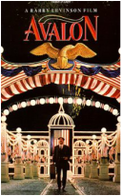
Avalon (1990)
A Polish-Jewish family comes to the USA at the beginning of the Twentieth Century. There, the family and their children try to make themselves a better future in the so-called promised land. Director: Barry Levinson Stars: Aidan Quinn, Elizabeth Perkins, Leo Fuchs 
The Immigrant (2013)
1921. An innocent immigrant woman is tricked into a life of burlesque and vaudeville until a dazzling magician tries to save her and reunite her with her sister who is being held in the confines of Ellis Island. Director: James Gray Stars: Marion Cotillard, Joaquin Phoenix, Jeremy Renner |
Growth, Cities, and Immigration: Crash Course US History #25In which John Green teaches you about the massive immigration to the United States during the late 19th and early 20th century. Immigrants flocked to the US from all over the world in this time period. Millions of Europeans moved to the US where they drove the growth of cities and manned the rapid industrialization that was taking place. In the western US many, many Chinese immigrants arrived to work on the railroad and in mines. As is often the case in the United States, the people who already lived in the US reacted kind of badly to this flood of immigrants. Some legislators tried to stem the flow of new arrivals, with mixed success. Grover Cleveland vetoed a general ban on immigration, but the leadership at the time did manage to get together to pass and anti-Chinese immigration law. Immigrants did win some important Supreme Court decisions upholding their rights, but in many ways, immigrants were treated as second class citizens. At the same time, the country was rapidly urbanizing. Cities were growing rapidly and industrial technology was developing new wonders all the time. John will cover all this upheaval and change, and hearken back to a time when racial profiling did in fact boil down to analyzing the side of someone's face.
Resource: NYPL - The Schomburg Center, The African-American Migration
Resource: Immigration to the United States Resource: The Andrew Carnegie Birthplace Museum Resource: NPS - Ellis Island Resource: The Statue of Liberty Foundation Resource: LoC - City Life in the early 19th century Resource: ORE - Infrastructure: Mass Transit in 19th- and 20th Great American Novels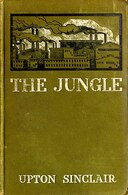
The Jungle
by Upton Sinclair The Jungle is a 1906 novel by the American journalist and novelist Upton Sinclair. The novel portrays the harsh conditions and exploited lives of immigrants in the United States in Chicago and similar industrialized cities. Wikipedia |
100 Years of Immigration to The U.S., 1919 to 2019
Foreign-born population in the United States, 1919-2019
America The Story of Us: Why do Immigrants Come to America?Skyscrapers and the Statue of Liberty are symbols of the American Dream for millions of immigrants. Urban life introduces a new breed of social ills, set against the backdrop of stunning skylines and ambitious innovations
Immigrants at Ellis Island | History
An estimated 40% of Americans are descended from people who passed through the Ellis Island immigration station during its six decades of operation. But what was the immigration process like? #HistoryChannel
|
Post-Reconstruction
13. Following Reconstruction, old political and social structures reemerged and racial discrimination was institutionalized.
The removal of federal troops from the South accompanied the end of Reconstruction and helped lead to the restoration of the Democratic Party’s control of state governments. With the redemption of the South, many reforms enacted by Reconstruction governments were repealed.
Racial discrimination was institutionalized with the passage of Jim Crow laws. These state laws and local ordinances included provisions to require racial segregation, prohibit miscegenation, limit ballot access and generally deprive African Americans of civil rights.
Advocates against racial discrimination challenged institutionalized racism through the courts. The U.S. Supreme Court affirmed segregation in the Plessy v. Ferguson decision. The rise of the Ku Klux Klan and other nativist organizations brought increased violence against African Americans.
The removal of federal troops from the South accompanied the end of Reconstruction and helped lead to the restoration of the Democratic Party’s control of state governments. With the redemption of the South, many reforms enacted by Reconstruction governments were repealed.
Racial discrimination was institutionalized with the passage of Jim Crow laws. These state laws and local ordinances included provisions to require racial segregation, prohibit miscegenation, limit ballot access and generally deprive African Americans of civil rights.
Advocates against racial discrimination challenged institutionalized racism through the courts. The U.S. Supreme Court affirmed segregation in the Plessy v. Ferguson decision. The rise of the Ku Klux Klan and other nativist organizations brought increased violence against African Americans.
Resource: LoC: African American Perspectives
Resource: The Freedman's Bureau Online
Resource: HarpWeek Black History
Resource: NYU LAW - Neglected Voices
Resource: You Don't Have to Ride, Jim Crow!
Resource: Ferris State University - Jim Crow Museum
Resource: Jazz, A Film by Ken Burns, Jim Crow Era
Resource: NPS - Jim Crow Laws
Resource: PBS - The Rise and Fall of Jim Crow
Resource: American RadioWorks - Remembering Jim Crow
Resource: NEH, EDSITEment - Birth of a Nation, the NAACP, and the Balancing of Rights
Resource: The Freedman's Bureau Online
Resource: HarpWeek Black History
Resource: NYU LAW - Neglected Voices
Resource: You Don't Have to Ride, Jim Crow!
Resource: Ferris State University - Jim Crow Museum
Resource: Jazz, A Film by Ken Burns, Jim Crow Era
Resource: NPS - Jim Crow Laws
Resource: PBS - The Rise and Fall of Jim Crow
Resource: American RadioWorks - Remembering Jim Crow
Resource: NEH, EDSITEment - Birth of a Nation, the NAACP, and the Balancing of Rights
Sound Smart: Plessy v. Ferguson | HistoryHistorian Yohuru Williams talks about the Plessy v. Ferguson case and its effects on the Civil Rights Movement.
The New Jim Crow MuseumTour the Jim Crow museum with founder and curator, Dr. David Pilgrim. Dr. Pilgrim discusses some of the major themes of the Jim Crow Museum. Jim Crow was not just a character or a set of "laws", it was a system that built upon itself to create and sustain a society with a racial hierarchy.
|
The Choices Program: What was it like growing up in Alabama under Jim Crow?http://www.choices.edu/civilrights
Congressman John Lewis (D-GA) answers the question "What was it like growing up in Alabama under Jim Crow?" as a part of our curriculum unit on Civil Rights.
|
The Gilded Age: Problems
|
14. The Progressive era was an effort to address the ills of American society stemming from industrial capitalism, urbanization and political corruption.
Industrial capitalism, urbanization and political corruption contributed to many of the problems in American society in the late 19th and early 20th centuries. Organized movements, such as the Farmers’ Alliances and the Populist Party, were reactions to the effects of industrialization and created a reform agenda which contributed to the rise of Progressivism. Journalists, called muckrakers, exposed political corruption, corporate and industrial practices, social injustice and life in urban America. Progressives introduced reforms to address the ills associated with industrial capitalism. Their efforts led to antitrust suits (e.g., Northern Securities Company), antitrust legislation (Clayton Antitrust Act), railroad regulation (Hepburn Act), and consumer protection legislation (e.g., Pure Food and Drug Act, Meat Inspection Act). The Federal Reserve Act was passed to control the nation’s money supply and regulate the banking system. Conservation reforms included the creation of the U.S. Forest Service, the National Park Service and the passage of the Newlands Act. Progressives fought political corruption and introduced reforms to make the political process more democratic (e.g., initiative, referendum, recall, secret ballot, new types of municipal government, civil service reform, primary elections). Other progressive reforms included:
Resource: Nellie Bly, The Pioneer Woman Journalist
Resource: NEH, EDSITEment - Kate Chopin's "The Awakening" Resource: Fraser - Federal Reserve Act of 1913 Resource: The Forest History Society Resource: National Park System Timeline (Annotated) Gilded Age Politics: Crash Course US History #26John Green teaches you about the Gilded Age and its politics. What, you may ask, is the Gilded Age? The term comes from a book by Mark Twain and Charles Dudley Warner titled, "The Gilded Age." You may see a pattern emerging here. It started in the 1870s and continued on until the turn of the 20th century. The era is called Gilded because of the massive inequality that existed in the United States. Gilded Age politics were marked by a number of phenomenons, most of them having to do with corruption. On the local and state level, political machines wielded enormous power. John gets into details about the most famous political machine, Tammany Hall. Tammany Hall ran New York City for a long, long time, notably under Boss Tweed. Graft, kickbacks, and voter fraud were rampant, but not just at the local level. Ulysses S. Grant ran one of the most scandalous presidential administrations in U.S. history, and John will tell you about two of the best known scandals, the Credit Mobilier scandal and the Whiskey Ring. There were a few attempts at reform during this time, notably the Civil Service Act of 1883 and the Sherman Anti-trust act of 1890. John will also get into the Grange Movement of the western farmers, and the Populist Party that arose from that movement. The Populists, who threw in their lot with William Jennings Bryan, never managed to get it together and win a presidency, and they faded after 1896. Which brings us to the Progressive Era, which we'll get into next week!
|
The Progressive Amendmentshttp://www.annenbergclassroom.org/ - A selected lecture from "Introduction to Key Constitutional Concepts and Supreme Court Cases" with University of Pennsylvania law professor Kermit Roosevelt III. For more civics education resources, go to AnnenbergClassroom.org
Elected v. Appointed: Senators & the Seventeenth Amendment [POLICYbrief]
Prior to the Seventeenth Amendment in 1913, U.S. senators were appointed by their state legislators and not directly elected by the people. Professors Wendy Schiller from Brown University and Todd Zywicki from George Mason University discuss the genesis of the amendment and how it fundamentally changed American politics.
Does "The Wonderful Wizard of Oz" have a hidden message? - David B. Parker
View full lesson: http://ed.ted.com/lessons/does-the-wo... In his introduction to “The Wonderful Wizard of Oz,” L. Frank Baum claims that the book is simply an innocent children’s story. But some scholars have found hidden criticisms of late-nineteenth-century economic policies in the book. Is it possible that one of America’s favorite children’s stories is also a subversive parable? David B. Parker investigates the text for clues. Lesson by David B. Parker, animation by Avi Ofer.
|
American Experience: The Gilded Age
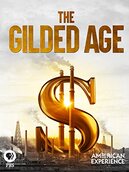
GILDED IS NOT GOLDEN.
In the closing decades of the nineteenth century, during what has become known as the Gilded Age, the population of the United States doubled in the span of a single generation. The nation became the world’s leading producer of food, coal, oil, and steel, attracted vast amounts of foreign investment, and pushed into markets in Europe and the Far East. As national wealth expanded, two classes rose simultaneously, separated by a gulf of experience and circumstance that was unprecedented in American life. These disparities sparked passionate and violent debate over questions still being asked in our own times: How is wealth best distributed, and by what process? Does government exist to protect private property or provide balm to the inevitable casualties of a churning industrial system? Should the government concern itself chiefly with economic growth or economic justice? The battles over these questions were fought in Congress, the courts, the polling place, the workplace and the streets. The outcome of these disputes was both uncertain and momentous, and marked by a passionate vitriol and level of violence that would shock the conscience of many Americans today. The Gilded Age presents a compelling and complex story of one of the most convulsive and transformative eras in American history.
|
Promo | The Gilded Age
Meet the titans and barons of the glittering late 19th century, whose materialistic extravagance contrasted harshly with the poverty of the struggling workers who challenged them. The vast disparities between them sparked debates still raging today.
Chapter 1 | The Gilded Age | American Experience | PBS
Meet the elite of the lavishly wealthy Gilded Age — and the struggling workers who challenged them. Learn more about our documentary, THE GILDED AGE, including where to watch the full film: https://www.pbs.org/wgbh/americanexpe..
|
The Progressive Era: Crash Course US History #27John Green teaches you about the Progressive Era in the United States. In the late 19th and early 20th century in America, there was a sense that things could be improved upon. A sense that reforms should be enacted. A sense that progress should be made. As a result, we got the Progressive Era, which has very little to do with automobile insurance, but a little to do with automobiles. All this overlapped with the Gilded Age, and is a little confusing, but here we have it. Basically, people were trying to solve some of the social problems that came with the benefits of industrial capitalism. To oversimplify, there was a competition between the corporations' desire to keep wages low and workers' desire to have a decent life. Improving food safety, reducing child labor, and unions were all on the agenda in the Progressive Era. While progress was being made, and people were becoming more free, these gains were not equally distributed. Jim Crow laws were put in place in the south, and immigrant rights were restricted as well. So once again on Crash Course, things aren't so simple.
Resource: COMMONLIT: The Progessive Era
|
Sound Smart: Child Labor in the Industrial Revolution | History
Historian Yohuru Williams gives a rundown of important facts on child labor in the time of the Industrial Revolution. #SoundSmart
Child Labor Reform in the Progressive Era
At the turn of the twentieth century, progressive reformers turn their attention to the nearly two million children working often in unhealthy or dangerous work environments.
|
Foreign Affairs from Imperialism to Post-World War I
(1898-1930)
American Imperialism & Global Progressivism
|
15. As a result of overseas expansion, the Spanish-American War and World War I, the United States emerged as a world power.
Resource: NEH, EDSITEment - The Birth of an American Empire (4 Lessons) Resource: Crucible of Empire: The Spanish-American War Resource: A World Power Resource: The 1897 Petition Against the Annexation of Hawaii Resource: Theodore Roosevelt Association American Imperialism: Crash Course US History #28John Green teaches you about Imperialism. In the late 19th century, the great powers of Europe were running around the world obtaining colonial possessions, especially in Africa and Asia. The United States, which as a young country was especially suceptible to peer pressure, followed along and snapped up some colonies of its own. The US saw that Spain's hold on its empire was weak, and like some kind of expansionist predator, it jumped into the Cuban War for Independence and turned it into the Spanish-Cuban-Phillipino-American War, which usually just gets called the Spanish-American War. John will tell you how America turned this war into colonial possessions like Puerto Rico, The Philippines, and almost even got to keep Cuba. The US was busy in the Pacific as well, wresting control of Hawaii from the Hawaiians. All this and more in a globe-trotting, oppressing episode of Crash Course US History.
|
History through Hollywood
Rough Riders (1997
TV Movie) Undersecretary of the Navy Theodore Roosevelt resigns to form a volunteer militia unit called "The Rough Riders" to fight in the Spanish American War. Director: John Milius Stars: Tom Berenger, Sam Elliott, Gary Busey, Brad Johnson 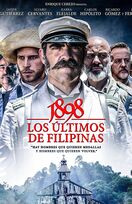
1898: Our Last Men in the Philippines (2016)
A soldiers trapped inside a church as last refugee. A fight that no one couldn't win. A war that no one wanted to lose. Director: Salvador Calvo Stars: Luis Tosar, Javier Gutiérrez, Álvaro Cervantes 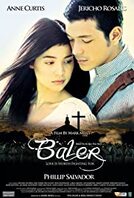
Baler (2008)
Baler is a love story between Feliza, the daughter of a rebel commander and Celso, a half-Spanish soldier, set during the twilight years of the Spanish regime in the Philippines. The young couple struggle to keep their forbidden love alive despite familial and political tensions, culminating in an almost year-long blockade known as the Siege of Baler. Director: Mark Meily Stars: Phillip Salvador, Jericho Rosales, Anne Curtis 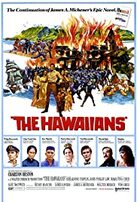
The Hawaiians (1970)
The intertwined lives of two kindred souls with ambition begins when Captain Whip Hoxworth discovers that Nyuk Tsin has been smuggled aboard as part of cargo on The Carthaginian, which he ... Director: Tom Gries Stars: Charlton Heston, Tina Chen, Geraldine Chaplin 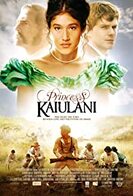
Princess Kaiulani (2009)
The true story of a Hawaiian princess' attempts to maintain the independence of the island against the threat of American colonization. Director: Marc Forby Stars: Q'orianka Kilcher, Barry Pepper, Shaun Evans |
American Experience: Panama Canal
|
On August 15th, 1914, the Panama Canal opened, connecting the world’s two largest oceans and signaling America’s emergence as a global superpower. American ingenuity and innovation had succeeded where, fifteen years earlier, the French had failed disastrously. But the U.S. paid a price for victory: a decade of ceaseless, grinding toil, an outlay of more than 350 million dollars — the largest single federal expenditure in history to that time — and the loss of more than 5,000 lives. Along the way, Central America witnessed the brazen overthrow of a sovereign government, the influx of more 55,000 workers from around the globe, the removal of hundreds of millions of tons of earth, and engineering innovation on an unprecedented scale. The construction of the Canal was the epitome of man’s mastery over nature and signaled the beginning of America’s domination of world affairs.
|
Progressive Presidents: Crash Course US History #29
|
John Green teaches you about the Progressive Presidents, who are not a super-group of former presidents who create complicated, symphonic, rock soundscapes that transport you into a fantasy fugue state. Although that would be awesome. The presidents most associated with the Progressive Era are Theodore Roosevelt, William Taft, and Woodrow Wilson. During the times these guys held office, trusts were busted, national parks were founded, social programs were enacted, and tariffs were lowered. It wasn't all positive though, as their collective tenure also saw Latin America invaded A LOT, a split in the Republican party that resulted in a Bull Moose, all kinds of other international intervention, and the end of the Progressive Era saw the United States involved in World War. If all this isn't enough to entice, I will point out that two people get shot in this video. Violence sells, they say.
Theodore Roosevelt: Progressive Crusader | The Heritage ...
Sep 24, 2012 — Key Takeaways. As President, Roosevelt pushed executive powers to new limits, arguing that the rise of industrial capitalism had rendered ... Theodore Roosevelt: Impact and Legacy | Miller Center
Theodore Roosevelt is widely regarded as the first modern President of the United ... His presidency endowed the progressive movement with credibility, lending ... Teddy Roosevelt nominated as Bull Moose candidate ...
Theodore Roosevelt is nominated for the presidency by the Progressive Party, a group of Republicans dissatisfied with the renomination of President William. Roosevelt's Progressivism | Boundless US History
Theodore Roosevelt strived to reconcile labor and business through Progressive legislation. The Progressive movement encompassed these reconciliations as ... |
President McKinley Assassinated
Theodore Roosevelt: Youngest U.S. President & Nobel Peace Prize Winner | Mini Bio | BIO
Watch a short biography video of Theodore Roosevelt, the 26th president of the United States who focused on ecological preservation. #Biography #TheodoreRoosevelt
Woodrow Wilson: The great romantic
President Woodrow Wilson lobbied Congress to support his passion project, the League of Nations, but he also lobbied a widow to become the second Mrs. Wilson. Mo Rocca offers a portrait of the 28th president.
|
The United States in World War I
America in World War I: Crash Course US History #30
|
John Green teaches you about American involvement in World War I, which at the time was called the Great War. They didn't know there was going to be a second one, though they probably should have guessed, 'cause this one didn't wrap up very neatly. So, the United States stayed out of World War I at first, because Americans were in an isolationist mood in the early 20th century. That didn't last though, as the affronts piled up and drew the US into the war. Spoiler alert: the Lusitania was sunk two years before we joined the war, so that wasn't the sole cause for our jumping in. It was part of it though, as was the Zimmerman telegram, unrestricted submarine warfare, and our affinity for the Brits. You'll learn the war's effects on the home front, some of Woodrow Wilson's XIV Points, and just how the war ended up expanding the power of the government in Americans' lives.
U.S. Entry into World War I - HISTORY
Apr 6, 2017 — On August 4, as World War I erupted across Europe, President Woodrow Wilson proclaimed America's neutrality, stating the nation “must be ... U.S. Participation in the Great War (World War I) | Progressive ...
U.S. Participation in the Great War (World War I). Corner of the Battlefield Near Arras, August 8, 1918. Detroit Publishing Company. War broke out in Europe in ... |
How WWI Changed America: America Goes to War
When World War I broke out in Europe in 1914, President Woodrow Wilson declared the U.S. neutral. By 1917, President Wilson announced, “the world must be made safe for democracy” which brought the nation into war, reshaping its role in the world.
The US in World War I | History
After running on the campaign, "He Kept Us Out of the War," Woodrow Wilson brings the United States into World War I in April 1917. #TheWorldWars
|
Local History:
"Lost Voices of the Great War"
- Stan Hywet Hall & Gardens
|
Educational Materials
|
For additional resources and a listing of programs and activities happening around Ohio and the nation, visit the United States World War One Commission's website at www.worldwar1centennial.org.
The commemoration of Summit County and the Great War is supported in part by the Ohio History Connection.
The commemoration of Summit County and the Great War is supported in part by the Ohio History Connection.
Stan Hywet and the Great WarStan Hywet Hall & Gardens, 714 N. Portage Path, Akron, Ohio
The Seiberling family provided financial support for war-related organizations, shifted rubber production from domestic to military goods, and sent their sons and grandsons into battle to fight two world wars. In addition to touring the Seiberling estate, guests may view the permanent exhibit, “The Seiberling Legacy,” which highlights the family's legacy including their contributions to both world wars. Visit www.stanhywet.org for hours of operation. |
MAPS World War One ExhibitMAPS Air Museum, 2260 International Pkwy, North Canton, Ohio
Recently opened display in the Ohio Military Museum section, located on the mezzanine level, accessible by elevator. The display covers the story of World War One from the assassination of Franz Ferdinand, heir to the throne of Austria-Hungary, through the occupation of Germany by the victorious Allies after the war. The display consists of text, posters, photographs, art work, and uniforms and artifacts of the American Doughboy, including a life-size fully equipped Doughboy mannequin. American volunteers, such as the Lafayette Escadrille and the American Field Service (AFS) ambulance drivers for France, who entered the war before America officially became a combatant, are noted as well. The majority of the display discusses the American involvement, including the branches of service involved as well as a selection of technological advances created to meet military needs. MAPS hours are Tuesday-Saturday, 9am-4:30pm; Sunday, 11:30am-4pm; closed Mondays. Telephone: 330-896-6332 https://mapsairmuseum.org. |
Post-War Years: Peacekeeper vs. Isolationists
|
16. After WWI, the United States pursued efforts to maintain peace in the world. However, as a result of the national debate over the Versailles Treaty ratification and the League of Nations, the United States moved away from the role of world peacekeeper and limited its involvement in international affairs.
Resource: NEH EDSITEment - The Debate in the United States over the League of Nations (3 Lessons) Resource: Postwar Disillusionment and the Quest for Peace, 1921-1929 Resource: NEH, EDSITEment - Woodrow Wilson and Foreign Policy (4 Lessons) Resource: NEH, EDSITEment - From Neutrality to War: The United States and Europe, 1921–1941 (4 Lessons) Resource: University of Oxford - History of the League of Nations Treaty of VersaillesU.S. President Woodrow Wilson was among the statesmen who gathered in France in June 1919 to sign the Treaty of Versailles, an agreement that did little to heal the wounds of World War I and set the stage for World War II. http://www.britannica.com/eb/article-...Versailles?source=youtube_18879
|
Woodrow Wilson's Fourteen Points | History
Jacqui Rossi explains the details of President Woodrow Wilson's 1918 plan to end World War I by assessing both the causes of war and solutions for peace.
War has been Outlawed, time to pay attention!Kellogg-Briand Pact, agreement, signed Aug. 27, 1928, condemning "recourse to war for the solution of international controversies." It is more properly known as the Pact of Paris. In June, 1927, Aristide Briand, foreign minister of France, proposed to the U.S. government a treaty outlawing war between the two countries. Frank B. Kellogg, the U.S. Secretary of State, returned a proposal for a general pact against war, and after prolonged negotiations the Pact of Paris was signed by 15 nations—Australia, Belgium, Canada, Czechoslovakia, France, Germany, Great Britain, India, the Irish Free State, Italy, Japan, New Zealand, Poland, South Africa, and the United States. The contracting parties agreed that settlement of all conflicts, no matter of what origin or nature, that might arise among them should be sought only by pacific means and that war was to be renounced as an instrument of national policy. Although 62 nations ultimately ratified the pact, its effectiveness was vitiated by its failure to provide measures of enforcement
|
Prosperity, Depression and
the New Deal
(1919-1941)
Post-War Years: The Roaring 20s and Social Unrest
17. Racial intolerance, anti-immigrant attitudes and the Red Scare contributed to social unrest after World War I.
- The Great Migration of African Americans to northern cities heightened racial tensions there and led to a series of urban race riots in 1919. Lynchings and the enforcement of Jim Crow legislation continued in the South during the post-war era. Racial intolerance also was seen in the revival of the Ku Klux Klan across the United States.
- An increase in immigration to the United States from southern and eastern Europe preceded World War I. Nativism after the war was reflected in the passage of immigration quotas. Intolerance toward immigrants, Catholics and Jews was exhibited by groups such as the Ku Klux Klan.
- The success of the Bolshevik Revolution in Russia followed by post-war labor strikes and a series of bombs sent to public and business officials in the United States stirred fears of revolution among Americans. The Red Scare of 1919-1920 was a reaction to these perceived threats and led to the incarceration and deportation of many aliens
|
Resource: The New York Library - The African-American Migration Experience
Resource: Up from the Bottoms: The Search for the American Dream Resource: NEH, EDSITEment - African-American Soldiers After World War I: Had Race Relations Changed? Resource: NEH, EDSITEment - NAACP's Anti-Lynching Campaigns: The Quest for Social Justice... (2 Lessons) Resource: Library of Congress - Political Cartoons Resource: Editorial Cartoons of J.N. "Ding" Darling Resource: University of Washington - The Ku Klux Klan In Washington State, 1920s Resource: Baruch College - Red Scare (1918-1921) is an Image Database by Leo Robert Klein Great American Novels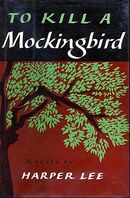
To Kill a Mockingbird
by Harper Lee To Kill a Mockingbird is a novel by Harper Lee published in 1960. Instantly successful, widely read in high schools and middle schools in the United States, it has become a classic of modern American literature, winning the Pulitzer Prize. Wikipedia
|
Sound Smart: The Great Migration | History
Historian Yohuru Williams explains what you need to know to sound smart about the Great Migration of African Americans from the South to the North after the Civil War.
Up South: African-American Migration in the Era of the Great WarDuring World War I, tens of thousands of African Americans fled the South. In Up South, a Mississippi barber and a sharecropper woman tell how they organized groups to escape Jim Crow laws, lynchings, and forced labor. The promise of freedom and full citizenship drew them to Chicago. Once there, the migrants faced poor housing, discrimination on the job, and racial violence. They responded by forming women's clubs, engaging in political campaigns, and creating the "New Negro" movement. (Length: 30 minutes)
*Also available in Spanish TED: The Great Migration and the power of a single decision | Isabel Wilkerson
|
Social Change: Economics
18. An improved standard of living for many, combined with technological innovations in communication, transportation and industry, resulted in social and cultural changes and tensions.
- Following World War I, the United States experienced a period of successful advances in industry and an economic boom that improved the standards of living for many Americans. Technological innovations in communication included commercial radio broadcasts, talking motion pictures, and wider circulation of newspapers and magazines. These innovations influenced the development of a popular culture and mass advertising.
- Advances in transportation during this era include the Model A Ford and the airplane. In industry, mass production techniques continued to make factory production more efficient. These developments also contributed to an improved standard of living.
- These innovations brought change. But some changes challenged conventional social mores and created tensions. For example, increased automobile ownership contributed to the growth of suburbs, the creation of new businesses (e.g., motels, gas stations) and the expansion of others (e.g., rubber, plate glass, petroleum, steel). New surfaced roads were constructed to accommodate increased traffic. But use of the automobile also challenged traditional family values and tried the patience of travelers. Young people used cars to exercise freedom from parental rules. Increased numbers of commuters had to face the problems of traffic congestion
Industrial Advancements
Resource: Life Without Technology
Resource: NEH, EDSITEment - Carl Sandburg's "Chicago": Bringing a Great City Alive
Resource: Henry Ford and the Model T: A Case Study in Productivity
Resource: The Henry Ford
Resource: PBS, American Experience - Henry Ford
Resource: NEH, EDSITEment - Carl Sandburg's "Chicago": Bringing a Great City Alive
Resource: Henry Ford and the Model T: A Case Study in Productivity
Resource: The Henry Ford
Resource: PBS, American Experience - Henry Ford
How The Ford Model T Took Over The World
History of the Model T | The Henry Ford’s Innovation Nation
In this segment from “The Henry Ford’s Innovation Nation” you’ll learn about the Model T car.
Natural Rubber | How It's Made
Enjoy the factory fun with this How It's Made: Natural Rubber music video. | For more How It's Made, visit http://science.discovery.com/tv-shows...
Charles Goodyear
Charles Goodyear (1800–1860) invented “vulcanized” rubber in 1839 when he accidentally left a mixture of India rubber, sulfur and lead oxide on a hot stove. This chemical reaction of rubber with sulfur at a high temperature transformed it from a smelly, virtually useless substance into a stable, versatile commercial product with hundreds of applications. Goodyear was granted U.S. Patent No. 3633 in 1844, but his vulcanization process was so simple that it was easily pirated.
|
River Rouge Plant; Recycling Model T Fords; Hoover w/ Edison & Ford 221690-10 | Footage Farm
1916 Highland Park Assembly Line 221196-09Driving a Ford Model T Is a Lot Harder Than You'd Think! We Tried It
Starting in 1908, Henry Ford sold his novel Model T cars as the first to be really accessible to the masses. What's more, he marketed them as easy to handle for casual drivers and (gasp!) women since they started with a button rather than a crank. Thing is, those old Model Ts were still pretty complicated to drive. Bloomberg Pursuits' Hannah Elliott took a 1914 Model T for a spin but first she needed a driving lesson.
Ford Model T: How to Drive The Car That Moved The World - XCAR
|
Industrial Conflict
The Labor Movement in the United States | History
Analyze the impact of the labor movement in America throughout the 19th and 20th centuries.
History through Song
|
Woody Guthrie- Ludlow MassacreRefers to the violent deaths of 20 people, 11 of them children, during an attack by the Colorado National Guard on a tent colony of 1,200 striking coal miners and their families inLudlow, Colorado on April 20, 1914
Bruce Springsteen - Factory |
Florence Reece - Which Side are You on?Billy Bragg - Power in a Union |
History through Hollywood
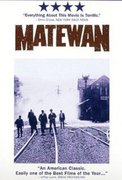
Matewan (1987)
A labor union organizer comes to an embattled mining community brutally and violently dominated and harassed by the mining company.
Director: John Sayles
Stars: Chris Cooper, James Earl Jones, Mary McDonnell, Will Oldham
A labor union organizer comes to an embattled mining community brutally and violently dominated and harassed by the mining company.
Director: John Sayles
Stars: Chris Cooper, James Earl Jones, Mary McDonnell, Will Oldham
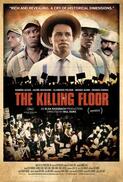
"American Playhouse" The Killing Floor (1984)
During World War I, a poor black Southerner travels north to Chicago to get work in the city's slaughterhouses, where he becomes embroiled in the organized labor movement.
Director: Bill Duke
Stars: Damien Leake, Alfre Woodard, Dennis Farina
During World War I, a poor black Southerner travels north to Chicago to get work in the city's slaughterhouses, where he becomes embroiled in the organized labor movement.
Director: Bill Duke
Stars: Damien Leake, Alfre Woodard, Dennis Farina
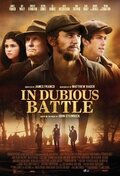
In Dubious Battle (2016)
An activist gets caught up in the labor movement for farm workers in California during the 1930s.
Director: James Franco
Stars: Nat Wolff, James Franco, Vincent D'Onofrio
An activist gets caught up in the labor movement for farm workers in California during the 1930s.
Director: James Franco
Stars: Nat Wolff, James Franco, Vincent D'Onofrio
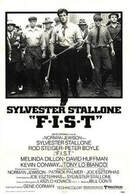
F.I.S.T. (1978)
A rebellious Cleveland warehouse worker rises through the ranks of a trucking industry union to become union president but his organized crime links cause his eventual downfall.
Director: Norman Jewison
Stars: Sylvester Stallone, Rod Steiger, Peter Boyle
A rebellious Cleveland warehouse worker rises through the ranks of a trucking industry union to become union president but his organized crime links cause his eventual downfall.
Director: Norman Jewison
Stars: Sylvester Stallone, Rod Steiger, Peter Boyle
Modern Labor Union documentaries:
- American Dream
- Fight in the Fields
- Roger & Me
- The Take (Spanish)
- Workingman's Death (German)
Social Change: Cultural
19. Movements such as the Harlem Renaissance, African-American migration, women’s suffrage and Prohibition all contributed to social change.
Resource: Teaching With Documents: The Volstead Act and Related Prohibition Documents
Resource: PBS - Prohibition, A Film by Ken Burns & Lynn Novick
Resource: Teaching With Documents: Woman Suffrage and the 19th Amendment
Resource: Voting Rights for Women: Pro- and Anti-Suffrage
Resource: NEH, EDSITEment - Women's Suffrage: Why the West First?
Resource: NEH, EDSITEment - Charlotte Perkins Gilman's "The Yellow Wall-paper"—The "New Woman"
Resource: The Roaring 20s
Resource: PBS - Jazz, A Film by Ken Burns
Resource: NEH, EDSITEment - Jazz and World War II: A Rally to Resistance, A Catalyst for Victory
- The Harlem Renaissance was a celebration of African American culture and contributed to social change. The themes of African American art and literature gave pride to people of African heritage and increased awareness of the struggles related to intolerance and life in large urban centers. Jazz flourished during the Harlem Renaissance and became an established American music genre.
- The large numbers of African Americans moving to northern cities during the Great Migration increased competition for jobs, housing and public services. The movement to give women suffrage saw the fruition of its goal with the passage of the 19th Amendment.
- The change brought more women into the political process, eventually including women running for public office. Prohibition had mixed results. Establishments that openly sold liquor closed their doors.
- Prohibition lacked popular support. It further divided the nation along secularist/ fundamentalist, rural/urban and modern/traditional lines. It led to speakeasies and increased organized crime. The law was difficult to enforce and was repealed with the 21st Amendment.
Resource: Teaching With Documents: The Volstead Act and Related Prohibition Documents
Resource: PBS - Prohibition, A Film by Ken Burns & Lynn Novick
Resource: Teaching With Documents: Woman Suffrage and the 19th Amendment
Resource: Voting Rights for Women: Pro- and Anti-Suffrage
Resource: NEH, EDSITEment - Women's Suffrage: Why the West First?
Resource: NEH, EDSITEment - Charlotte Perkins Gilman's "The Yellow Wall-paper"—The "New Woman"
Resource: The Roaring 20s
Resource: PBS - Jazz, A Film by Ken Burns
Resource: NEH, EDSITEment - Jazz and World War II: A Rally to Resistance, A Catalyst for Victory
|
Great American Novels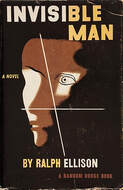
Invisible Man
by Ralph Ellison Invisible Man is a novel by Ralph Ellison, published by Random House in 1952. It addresses many of the social and intellectual issues faced by the African Americans in the early twentieth century, ... Wikipedia The Harlem Renaissance's cultural explosion, in photographs
At the turn of the last century, African Americans from across the country flooded New York City’s Harlem, leading to an explosion of books, poetry and music that is now collectively known as the Harlem Renaissance. A photography exhibit currently on display traces the history of one of the nation’s most recognized neighborhoods as it continues to evolve. Special correspondent Jared Bowen reports.
Rare Footage Shows All-Black Towns in 1920s America | NowThis
This rare footage shows what life was like in all-Black towns during the 1920s. » Subscribe to NowThis: http://go.nowth.is/News_Subscribe
|
Jazz: A Film By Ken Burns
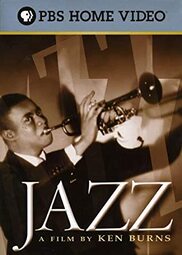
Filmmaker Ken Burns tells the story of jazz — the quintessential American art form. The 10-part series follows the growth and development of jazz music from the gritty streets of New Orleans to the Lincoln Gardens on Chicago's south side, where Louis Armstrong first won fame, from Prohibition-era speakeasies to the wide-open clubs of Kansas City, from the elegant Roseland Ballroom in Times Square, where only whites were allowed to dance, to the more egalitarian Savoy Ballroom in Harlem, where people of all colors mingled.
Six years in the making, Jazz features 75 interviews, more than 500 pieces of music, 2,400 still photographs and more than 2,000 archival film clips — many rare and never before seen. Third-person voices are provided by Samuel L. Jackson, Delroy Lindo, Derek Jacobi and Harry Connick Jr., among others. |
Ken Burns discusses his documentary series "Jazz" - EMMYTVLEGENDS.ORG
See Ken Burns' full interview at http://emmytvlegends.org/interviews/p...
|
Women's Suffrage: Crash Course US History #31
|
John Green teaches you about American women in the Progressive Era and, well, the progress they made. So the big deal is, of course, the right to vote women gained when the 19th amendment was passed and ratified. But women made a lot of other gains in the 30 years between 1890 and 1920. More women joined the workforce, they acquired lots of other legal rights related to property, and they also became key consumers in the industrial economy. Women also continued to play a vital role in reform movements. Sadly, they got Prohibition enacted in the US, but they did a lot of good stuff, too. The field of social work emerged as women like Jane Addams created settlement houses to assist immigrants in their integration into the United States. Women also began to work to make birth control widely available. You'll learn about famous reformers and activists like Alice Paul, Margaret Sanger, and Emma Goldman, among others.
|
The 19th Amendment | History
In 1920, women in the U.S. gained the right to vote - but only after a struggle that lasted more than 70 years! Learn how suffragists fought for the 19th amendment. #HistoryChannel
Sound Smart: Women's Suffrage | History
Historian Yohuru Williams recaps the efforts of women to secure the right to vote in the early 19th century.
Sound Smart: The 19th Amendment | HistoryHistorian Matthew Pinsker Learn about the long arduous journey made by suffragists that eventually won them the right to vote in 1920. Hosted by historian Matthew Pinsker.
What Happened at the Seneca Falls Convention? | HistoryLearn about the movement for women's equality that precipitated the Seneca Falls Convention in 1848, and what its attendees - including Elizabeth Cady Stanton and Lucretia Mott - hoped to achieve.
|
American Experience: The Vote
Chapter 1 | Part 1 | The Vote | American Experience | PBS
Learn more about THE VOTE, including where to watch the documentary: https://www.pbs.org/wgbh/americanexpe... One hundred years after the passage of the 19th Amendment, The Vote tells the dramatic culmination story of the hard-fought campaign waged by American women for the right to vote — a transformative cultural and political movement that resulted in the largest expansion of voting rights in U.S. history.
|
One hundred years after the passage of the 19th Amendment, The Vote tells the dramatic culmination story of the hard-fought campaign waged by American women for the right to vote — a transformative cultural and political movement that resulted in the largest expansion of voting rights in U.S. history.
In its final decade, from 1909 to 1920, movement leaders wrestled with contentious questions about the most effective methods for affecting social change. They debated the use of militant, even violent tactics, as well as hunger strikes and relentless public protests. The battle for the vote also upended previously accepted ideas about the proper role of women in American society and challenged the definitions of citizenship and democracy. Exploring how and why millions of 20th-century Americans mobilized for — and against — women’s suffrage, The Vote brings to life the unsung leaders of the movement and the deep controversies over gender roles and race that divided Americans then — and continue to dominate political discourse today.
|
The Roaring 20's: Crash Course US History #32
|
John Green teaches you about the United States in the 1920s. They were known as the roaring 20s, but not because there were lions running around everywhere. In the 1920s, America's economy was booming, and all kinds of social changes were in progress. Hollywood, flappers, jazz, there was all kinds of stuff going on in the 20s. But as usual with Crash Course, things were about to take a turn for the worse. John will teach you about the Charleston, the many Republican presidents of the 1920s, laissez-faire capitalism, jazz, consumer credit, the resurgent Klan, and all kinds of other stuff.
|
Great American Novels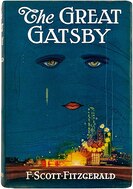
The Great Gatsby
by F. Scott Fitzgerald The Great Gatsby is a 1925 novel by American writer F. Scott Fitzgerald. Set in the Jazz Age on Long Island, the novel depicts narrator Nick Carraway's interactions with mysterious millionaire Jay Gatsby and Gatsby's obsession to reunite with his former lover, Daisy Buchanan. Wikipedia WWI Legacies: Flappers
Author Judith Mackrell explains the social movement after World War I that created flappers.
Teen life in the 1920s | Further Back In Time For Dinner
Life as a teenager in the 1920s wasn't exactly easy. Sienna and Julian Ferrone venture back in time to find out how young people lived in a world with no mobile phones and no TV. Sienna gets a taste of life as a flapper, and Julian dips his toe into the world of 1920s advertising. #BackInTimeAU
These Men Risked Their Lives to Build 1920s New York Skyscrapers
The skyscrapers of Manhattan needed a new, bolder type of construction worker. They got them in 'roughnecks' - hardened men who worked without safety harnesses, hard hats or even bathroom breaks. Watch the Full Episode with your FREE trial for Smithsonian Channel Plus by signing up today at https://watch.smithsonianchannel.com/
|
The Great Depression
Monetary Policies
|
20. The Great Depression was caused, in part, by the federal government’s monetary policies, stock market speculation and increasing consumer debt. The role of the federal government expanded as a result of the Great Depression.
Resource: NEH, EDSITEment- FDR: Fireside Chats, the New Deal... (5 Lessons) Resource: PBS American Experience - The Crash of 1929 Resource: PBS - The Dust Bowl, A Film by Ken Burns Resource: NEH, EDSITEment - Dust Bowl Days Resource: The GilderLehrman Institute - Wall Street Crash of 1929 Resource: Where Did All the Money Go? The Great Depression Mystery Resource: Economics of the New Deal Resource: The History Channel - The Great Depression Resource: American Memory Resource: The Great Depression and the Federal Government Resource: The 1930s: Drastic Times Call For Drastic Measures Resource: The Smithsonian - Picturing the Thirties Resource: UVA - America in the 1930s Resource: NEH, EDSITEment - "Esperanza Rising" Resource: FDR Prersidental Library and Museum Resource: Hyperhistory - Timelines of The Great Depression Resource: The Living New Deal Resource: Smithsonian - 1934 A New Deal for Artists Resource: NEH, EDSITEment - Depression-Era Photographs Resource: NEH, EDSITEment - Folklore in Zora Neale Hurston's... Resource: NEH, EDSITEment - John Steinbeck’s “The Grapes of Wrath” Resource: Our Documents - National Recovery Act (1933) Resource: LoC - FDR and the New Deal 1933-1945 Resource: Smithsonian - FDR Clashed with the Supreme Court – and Lost Resource: EH - Great Depression Resource: PBS American Experience - Seabiscuit Resource: YouTube - Seabiscuit vs. War Admiral - 1938 Match Race Resource: James J. Braddock Resource: Woody Guthrie Resource: LoC - Woody Guthrie and the Archive of American Folk Song Resource: NEH, EDSITEment - Harper Lee's "To Kill a Mockingbird"... Resource: NEH, EDSITEment - "To Kill A Mockingbird" and the Scottsboro Boys... Drawn History: Herbert Hoover | History
Herbert Hoover, America’s 31st president, took office in 1929, the same year the U.S. economy plummeted into the Great Depression.
|
History through Hollywood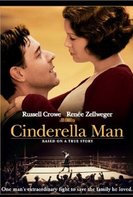
Cinderella Man (2005)
The story of James Braddock, a supposedly washed-up boxer who came back to become a champion and an inspiration in the 1930s. Director: Ron Howard Stars: Russell Crowe, Renée Zellweger, Craig Bierko, Paul Giamatti 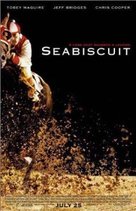
Seabiscuit (2003)
True story of the undersized Depression-era racehorse whose victories lifted not only the spirits of the team behind it but also those of their nation. Director: Gary Ross Stars: Tobey Maguire, Jeff Bridges, Elizabeth Banks, Chris Cooper 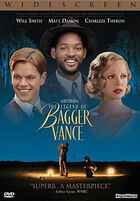
The Legend of Bagger Vance (2000)
A down-and-out golfer attempts to recover his game and his life with help from a mystical caddy. Director: Robert Redford Stars: Will Smith, Matt Damon, Charlize Theron 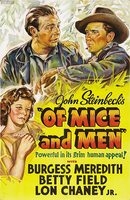
Of Mice and Men (1939)
A mentally disabled giant and his level headed guardian find work at a sadistic cowboy's ranch in depression era America. Director: Lewis Milestone Writers: John Steinbeck (by), Eugene Solow (screen play) Stars: Lon Chaney Jr., Burgess Meredith, Betty Field 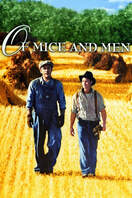
Of Mice and Men (1992)
A nomadic farm worker looks after his dimwitted, gentle-giant friend during the Great Depression. Director: Gary Sinise Writers: John Steinbeck (novel), Horton Foote (screenplay) Stars: John Malkovich, Gary Sinise, Ray Walston 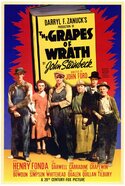
The Grapes of Wrath (1940)
A poor Midwest family is forced off their land. They travel to California, suffering the misfortunes of the homeless in the Great Depression. Director: John Ford Writers: Nunnally Johnson (screen play), John Steinbeck (based on the novel by) Stars: Henry Fonda, Jane Darwell, John Carradine 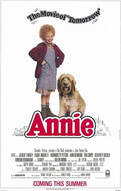
Annie (1982)
A spunky young orphan is taken in by a rich eccentric, much to the chagrin of the cantankerous woman who runs the orphanage. Director: John Huston Stars: Aileen Quinn, Albert Finney, Carol Burnett |
The Great Depression: Crash Course US History #33
|
John Green teaches you about the Great Depression. So, everybody knows that the Great Depression started with the stock market crash in 1929, right? Not exactly. The Depression happened after the stock market crash, but wasn't caused by the crash. John will teach you about how the depression started, what Herbert Hoover tried to do to fix it, and why those efforts failed.
Great American Novels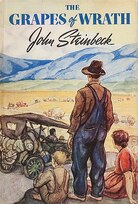
The Grapes of Wrath
by John Steinbeck The Grapes of Wrath is an American realist novel written by John Steinbeck and published in 1939. The book won the National Book Award and Pulitzer Prize for fiction, and it was cited prominently when Steinbeck was awarded the Nobel Prize in 1962. Wikipedia |
Stories from the Great DepressionThe National Archives Southeast Region presents stories from survivors of the Great Depression overlaid with powerful pictures from era.
The Great Depression
Teachable Moments are short films that provide a quick overview of important topics and events from the Roosevelt Era. Created by the FDR Library's Education staff with the support of the Pare Lorenz Center, they are designed to assist primary and secondary school students. Use this link to access the subtitled version of this Teachable Moment... https://www.youtube.com/watch?v=ROfQc...
|
The New Deal: Crash Course US History #34
|
John Green teaches you about the New Deal, which was president Franklin D. Roosevelt's plan to pull the united States out of the Great Depression of the 1930's. Did it work? Maybe. John will teach you about some of the most effective and some of the best known programs of the New Deal. They weren't always the same thing. John will tell you who supported the New Deal, and who opposed it. He'll also get into how the New Deal changed the relationship between the government and citizens, and will even reveal just how the Depression ended. (hint: it was war spending)
|
America the Story of Us: FDR | History
FDR's impact on America was especially profound by use of his groundbreaking use of mass media. Own America: The Story of Us on DVD or Blu-ray! http://www.shophistorystore.com/
Franklin Delano Roosevelt's (FDR's) New Deal Explained in One Minute
Franklin Delano Roosevelt's New Deal is, without a doubt, one of the most representative case studies in economic history when it comes to the willingness of the state (in our case, run by FDR) to think outside the box.
Here's How the Great Depression Brought on Social Security | History
Explore how the Great Depression of the 1930s forced America to consider having a social safety net, leading President FDR to sign the Social Security Act into law via his New Deal programs. Learn how Social Security has changed over time.
|
From Isolation to World War
(1930-1945)
Isolationists
21. During the 1930s, the U.S. government attempted to distance the country from earlier interventionist policies in the Western Hemisphere as well as retain an isolationist approach to events in Europe and Asia until the beginning of WWII.
- Following World War I, the United States was reluctant to become entangled in overseas conflicts that would lead to another war. Although it had used the Monroe Doctrine and the Roosevelt Corollary to justify intervention into Latin American affairs, the U.S. retreated from these policies during the1930s with the Good Neighbor Policy.
- The Neutrality Acts of the 1930s were attempts to isolate the country from the problems erupting in Asia and Europe.
- The United States tried to maintain its isolationist approach when war broke out in Europe. But to aid countries fighting against fascist aggression, the United States introduced the cash-and-carry policy, negotiated the destroyer-for-bases agreement and enacted the Lend-Lease Policy. It also helped write the Atlantic Charter. The expansionist policies of Japan and the bombing of Pearl Harbor ended U.S. isolationist policies.
The United States in
World War II
Mobilization
22. The United States mobilization of its economic and military resources during World War II brought significant changes to American society.
Resource: NEH, EDSITEment - FDR's "Four Freedoms" Speech
Resource: NEH, EDSITEment - American Diplomacy in World War II (4 Lessons)
Resource: NEH, EDSITEment - The United States in World War II: "The Proper Application of Overwhelming Force" (4 Lessons)
Resource: NEH, EDSITEment - On the Home Front
Resource: Memorandum Regarding the Enlistment of Navajo Indians
Resource: Navajo Code Talkers
Resource: Oklahoma Historical Society - Code Talkers
Resource: Documents and Photographs Related to Japanese Relocation During World War II
Resource: Japanese American Internment
- The mobilization of the United States to a wartime economy during World War II was massive. The federal government reorganized existing plants to produce goods and services for the war effort and instituted policies to ration and redirect resources.
- Mobilization caused major impacts on the lives of Americans. A peacetime draft was instituted in 1940 to supplement military enlistments. Scrap drives were conducted to reallocate materials for war goods. Regulations were imposed on some wages and prices. Some products were subjected to rationing. Citizens raised victory gardens to supplement food supplies and purchased war bonds to help fund the war. Some labor unions signed no-strike pledges.
- Job opportunities in the civilian workforce and in the military opened for women and minorities. African Americans organized to end discrimination and segregation so that they could contribute to the war effort. Although Japanese Americans were interned in relocation camps by the U.S. government, many enlisted in the armed services.
Resource: NEH, EDSITEment - FDR's "Four Freedoms" Speech
Resource: NEH, EDSITEment - American Diplomacy in World War II (4 Lessons)
Resource: NEH, EDSITEment - The United States in World War II: "The Proper Application of Overwhelming Force" (4 Lessons)
Resource: NEH, EDSITEment - On the Home Front
Resource: Memorandum Regarding the Enlistment of Navajo Indians
Resource: Navajo Code Talkers
Resource: Oklahoma Historical Society - Code Talkers
Resource: Documents and Photographs Related to Japanese Relocation During World War II
Resource: Japanese American Internment
World War II Part 1: Crash Course US History #35
|
John Green teaches you about World War II, a subject so big, it takes up two episodes. This week, John will teach you how the United States got into the war, and just how involved America was before Congress actually declared war. John will actually talk a little about the military tactics involved, and he'll get into some of the weaponry involved, specifically the huge amount of aerial bombing that characterized the war, and the atomic bombs that ended the war in the Pacific.
Hillsdale CollegeThe Second World Wars
|
December 7, 1941: Pearl HarborThe attack on the Pacific fleet based at Pearl Harbor on December 7, 1941 by Japanese fighters, bombers, and torpoedo bombers would forever change history and America's role in the world. Here is a feature recalling the attack and its impact on the lives of those who experienced it first hand as well as those who found out about it through news broadcasts.
The Central Florida WW2 Museum President Roosevelt Declares War on Japan | War ArchivesAmerica Prepares for World War 2 | America's Call to Arms | WW2 Newsreel | 1941
|
World War II Part 2 - The Homefront: Crash Course US History #36
|
John Green teaches you about World War 2, as it was lived on the home front. You'll learn about how the war changed the country as a whole, and changed how Americans thought about their country. John talks about the government control of war production, and how the war probably helped to end the Great Depression. A broader implementation of the income tax, the growth of large corporations, and the development of the West Coast as a manufacturing center were also results of the war. The war positivelychanged the roles of women and African Americans, but it was pretty terrible for the Japanese Americans who were interred in camps. In short, World War II changed America's role in the world, changed American life at home, and eventually spawned the History Channel.
|
World War Two and US Industrial Production | How military production gave the US an advantage in WW2
|
The U.S. HomefrontWWII In HD: America Enters World War II | History
After the bombing of Pearl Harbor on December 7, 1941, President Franklin Roosevelt committed American forces to the Allied cause in World War II.
The U.S. Homefront During WWII | HistoryIt was all hands on deck as Americans pitched into a second World War effort after the attack on Pearl Harbor in 1941.
Iowa PBS: Rationing During World War II | World War II StoriesTo help prevent a shortage of food and goods necessary during World War II, the federal government began to ration everything with a strategic value. Special coupon books were issued to every man, woman, and child in the united states. Without the coupon books, you could not buy certain items like sugar, meat, tires, or fuel oil. Americans were asked to turn down their thermostats to conserve fuel in colder months and grow more food in their backyard gardens. Learn more with this segment of Iowa Public Television's Iowa's WWII Stories.
AP: How people stayed healthy during wartime food rationing
How Japanese Americans Were Forced Into Concentration Camps During WWII | Flashback | HistoryAfter the attack on Pearl Harbor, the United States Government issued executive order 9066, which empowered the military to round up anyone of Japanese ancestry and place them in internment camps. #HistoryChannel
Web Originals : Ask History: Rosie the Riveter | HistoryWho was the "real" Rosie the Riveter? Ask History has the story behind this famous icon. #AskHistory
Running for President During WWII | Flashback | History
With World War II coming to a close, America held its presidential election in 1944, voting on who would determine the fate of a post-war world. Franklin D. Roosevelt, seeking his 4th term, faced off against Thomas E. Dewey, the Governor of New York. #Flashback
|
EuropeThe World Wars: Franklin D. Roosevelt | History
Mini-biography on the life of Franklin D. Roosevelt.
World War II in HD: Pearl Harbor | HistoryDecember 7, 1941 saw the deaths of 2,000 at Pearl Harbor, and the United States entry into World War II.
The World Wars: Dwight Eisenhower | History
Mini-biography on the life of Dwight D. Eisenhower.
Deconstructing History: Sherman Tank | Histor
With almost 50,000 manufactured during World War II, the M4 medium tank, popularly known as the "Sherman," provided critical armored support to Allied ground troops.
World War II in HD: D-Day | HistoryOver 130,000 troops stormed the beaches on D-Day, over one million would soon follow.
World War II in HD: Battle of the Bulge | History
Amazing color footage from the Battle of the Bulge.
WWII in HD: VICTORY IN EUROPE: VE Day Celebrated Across the Globe, 5/8/45 | History
On May 8, 1945, WWII came to an end in Europe as the Allies declared victory after 6 long years of war. Spontaneous celebrations erupt across the world, in this clip from WWII in HD, "End Game". #WWIIInHD
The World Wars: Harry S. Truman | History
Mini-biography on the life of Harry S. Truman.
|
The Pacific
|
Code Talkers
CIA: Navajo Code Talkers and the Unbreakable CodeIn the heat of battle, it is of the utmost importance that messages are delivered and received as quickly as possible. It is even more crucial that these messages are encoded so the enemy does not know about plans in advance.
During World War II, the Marine Corps used one of the thousands of languages spoken in the world to create an unbreakable code: Navajo. World War II wasn’t the first time a Native American language was used to create a code. During World War I, the Choctaw language was used in the transmission of secret tactical messages. It was instrumental in a successful surprise attack against the Germans. Germany and Japan sent students to the United States after World War I to study Native American languages and cultures, such as Cherokee, Choctaw, and Comanche. Because of this, many members of the U.S. military services were uneasy about continuing to use Code Talkers during World War II. They were afraid the code would be easily cracked, but that was before they learned about the complexity of Navajo. Resources:
Code of Honor - Comanche Code Talkers of WWII
This is a special television presentation by the Comanche National Museum and Cultural Center honoring the brave and heroic Comanche Code Talkers of WWII. The documentary originally aired Thanksgiving Day, 2013. www.comanchemusuem.com
|
Navajo Code TalkersNative Americans from the American southwest were vital to Allied victories during WWII.
An Unbreakable Code
The Code Talkers used native languages to send military messages before World War II. Choctaw, for example, was successfully used during World War I. But the Marine Corps needed an “unbreakable” code for its island-hopping campaign in the Pacific. Navajo, which was unwritten and known by few outside the tribe, seemed to fit the Corps’ requirements. Twenty-nine Navajos were recruited to develop the code in 1942. They took their language and developed a “Type One Code” that assigned a Navajo word to each English letter. They also created special words for planes, ships and weapons. But just because a person understood Navajo didn’t mean they could understand the code. While a person fluent in the language would hear a message that translated into a list of words that seemingly had no connection to each other, a code talker would hear a very clear message.
Here is an example: Navajo Code: DIBEH, AH-NAH, A-SHIN, BE, AH-DEEL-TAHI, D-AH, NA-AS-TSO-SI, THAN-ZIE, TLO-CHIN Translation: SHEEP, EYES, NOSE, DEER, BLOW UP, TEA, MOUSE, TURKEY, ONION Deciphered Code: SEND DEMOLITION TEAM TO … In addition to being unbreakable, the new code also reduced the amount of time it took to transmit and receive secret messages. Because all 17 pages of the Navajo code were memorized, there was no need to encrypt and decipher messages with the aid of coding machines. So, instead of taking several minutes to send and receive one message, Navajo code talkers could send several messages within seconds. This made the Navajo code talker an important part of any Marine unit. |
The Cold War
(1945-1991)
The Atomic Age
|
23. Use of atomic weapons changed the nature of war, altered the balance of power and began the nuclear age.
Resource: NEH, EDSITEment - The Origins of the Cold War, 1945–1949 (3 Lessons)
Resource: Atomic Archive Resource: DOE - Manhattan Project Signature Facilities Resource: ALSOS Digital Library for Nuclear Issues Resource: American Museum of Science & Energy Resource: National Museum of Nuclear Science & History Resource: ORNL, Swords to Plowshares (PDF) Resource: Harry S. Truman Library, The Decision to Drop the Bomb Resource: PBS American Experience, Race for the Superbomb Resource: Voices of the survivors from Hiroshima and Nagasaki Resource: Recorded Testimony of A-bomb Survivors Resource: Saga University, The Medical Effects of the Nagasaki Atomic Bombing Resource: Google Earth - Nagasaki Archive Resource: Nagasaki City - Peace & Atomic Bomb Resource: Google Earth - Hiroshima Archive Resource: Mapping - Hiroshima Archive Resource: Hiroshima Peace Memorial Museum Resource: Nuclear Files Resource: International Atomic Energy Agency Hiroshima: Dropping the BombHear first-hand accounts from the air and ground, re-telling every memory from the day the world first witnessed the horrors of atomic warfare.
|
History through Hollywood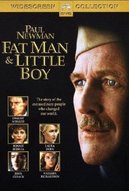
Fat Man and Little Boy (1989)
This film reenacts the Manhattan Project, the secret wartime project in New Mexico where the first atomic bombs were designed and built. Director: Roland Joffé Stars: Paul Newman, Dwight Schultz, Bonnie Bedelia 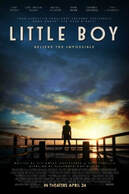
Little Boy (2015)
An eight-year-old boy is willing to do whatever it takes to end World War II so he can bring his father home. The story reveals the indescribable love a father has for his little boy and the love a son has for his father. Director: Alejandro Monteverde Stars: Jakob Salvati, Emily Watson, David Henrie 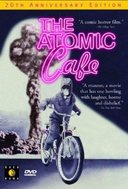
The Atomic Cafe (1982)
Disturbing collection of 1940s and 1950s United States government issued propaganda films designed to reassure Americans that the atomic bomb was not a threat to their safety. Directors: Jayne Loader, Kevin Rafferty, Pierce Rafferty Stars: Paul Tibbets, Harry S. Truman, W.H.P. Blandy, Brien McMahon 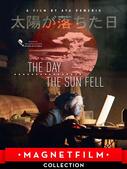
Als die Sonne vom Himmel fiel (2015)
(The Day the Sun Fell) The filmmaker's grandfather worked at the Red Cross after the Hiroshima bombing. Her quest to learn why he never talked about his experiences takes a new turn after Fukushima's catastrophe. Director: Aya Domenig Stars: Aya Domenig, Kiyomi Doi, Shigeru Doi |
Containment
|
24. The United States followed a policy of containment during the Cold War in response to the spread of communism.
Resource: The United States Enters the Korean Conflict Resource: Dwight D. Eisenhower Library - The Korean War Resource: Grand Valley State University Veteran's History Project Resource: korean-war.com
|
Here's How the Truman Doctrine Established the Cold War | History
Learn how the Truman Doctrine marked the beginning of the Cold War, how it shaped America's attitude towards communism and how it shifted its foreign policy on interventionism with its involvement in the Mediterranean after World War II.
|
The Cold War: Crash Course US History #37
|
John Green teaches you about the Cold War, which was the decades long conflict between the USA and the USSR. The Cold War was called cold because of the lack of actual fighting, but this is inaccurate. There was plenty of fighting, from Korea to Viet Nam to Afghanistan, but we'll get into that stuff next week. This week we'll talk about how the Cold War started. In short it grew out of World War II. Basically, the Soviets occupied eastern Europe, and the US supported western Europe. This setup would spill across the world, with client states on both sides. It's all in the video. You should just watch it.
|
What Was the Cold War?
The decades-long “Cold War” (1947-1989) between the United States and the Soviet Union was so named because the two global powers never came to direct blows. Yet, the war was not without its victims. In fact, millions of Cubans, Koreans and Vietnamese suffered under Communist tyranny. In this video, Renowned British historian Andrew Roberts explains why “The Cold War” could just as easily be called “The Third World War.”
|
American Experience: Cold War Roadshow
|
Cold War Roadshow tells the story of one of the most bizarre episodes in the annals of modern history — the unprecedented barnstorming across America in the fall of 1959 by Soviet Premier Nikita Khrushchev, the world leader of communism and America’s arch nemesis. At the very height of the Cold War, with American schoolchildren practicing duck-and-cover drills, the man who Americans feared could incinerate them in a rain of hydrogen bombs arrived in Washington, D.C. at the invitation of President Eisenhower. For both men, the visit was an opportunity to halt the escalating threats of the Cold War and chart a new course toward peaceful coexistence. For the American press, it was the media blockbuster story of the year.
Khrushchev Arrives in America - A Clip from "Cold War Roadshow"
When Nikita Khrushchev became the first Soviet Premier ever to visit the U.S., celebrations ran high. So did tensions.
|
The Red Scare (1920s-1960s)
|
25. The Second Red Scare and McCarthyism reflected Cold War fears in American society.
Resource: NEH, EDSITEment - Anticommunism in Postwar America, 1945–1954: Witch Hunt or Red Menace? (3 Lessons)
Resource: The Rise and Fall of Joseph McCarthy Resource: UC Berkeley - "Political Tests for Professors: Academic Freedom during the McCarthy Years" Resource: Center for Constitutional Rights - McCarthy Era Blacklist Victims Resource: Dwight D. Eisenhower Library - McCarthyism/The "Red Scare"
|
History through Hollywood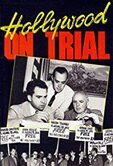
Hollywood on Trial (1976)
The documentary analyzes a dark period in Hollywood's history due to the Red Scare of the 1940's and 1950's, when actors, writers and directors were persecuted and investigated by the House... Director: David Helpern (as David Helpern Jr.) Stars: Walter Bernstein, Alvah Bessie, Lester Cole 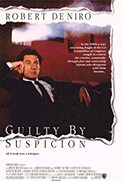
Guilty by Suspicion (1991)
David Merrill (Robert De Niro), a fictitious 1950s Hollywood Director, returns from filming abroad in France to find that his loyalty has been called into question by the House Committee on Un-American Activities, and he is unable to work until cleared. Director: Irwin Winkler Stars: Robert De Niro, Annette Bening, George Wendt 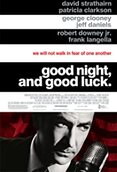
Good Night, and Good Luck. (2005)
Broadcast journalist Edward R. Murrow looks to bring down Senator Joseph McCarthy. Director: George Clooney Stars: David Strathairn, George Clooney, Patricia Clarkson 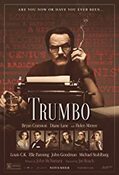
Trumbo (2015)
In 1947, Dalton Trumbo was Hollywood's top screenwriter, until he and other artists were jailed and blacklisted for their political beliefs. Director: Jay Roach Stars: Bryan Cranston, Diane Lane, Helen Mirren |
American Experience: McCarthy
|
McCarthy chronicles the rise and fall of Joseph McCarthy, the Wisconsin senator who came to power after a stunning victory in an election no one thought he could win. Once in office, he declared that there was a vast conspiracy threatening America — emanating not from a rival superpower, but from within. Free of restraint or oversight, he conducted a crusade against those he accused of being enemies of the state, a chilling campaign marked by groundless accusations, bullying intimidation, grandiose showmanship and cruel victimization. With lawyer Roy Cohn at his side, he belittled critics, spinning a web of lies and distortions while spreading fear and confusion. After years in the headlines, he was brought down by his own excesses and overreach. But his name lives on linked to the modern-day witch hunt we call “McCarthyism.”
Chapter 1 | McCarthy | American Experience | PBS
|
The Cold War: Early (Cuba & Asia)
|
26. The Cold War and conflicts in Korea and Vietnam influenced domestic and international politics.
Resource: Harvard Kennedy School - The Cuban Missle Crisis
Resource: Wilson Center - Cuban Missile Crisis Resource: NEH EDSITEment - The Cuban Missile Crisis, 1962 Resource: Vietnam War Bibliography by Richard Jensen Resource: History Commons - Timeline US-Vietnam (1947-2001) Resource: UC Berkeley Library Sound Recording Project - Vietnam War Resource: PBS American Experience - Vietnam War Resource: NEH, EDSITEment - Revolution '67 Protest: Why and How Resource: NEH, EDSITEment - Revolution '67 How Do We Know? Resource: National Archives - Pentagon Papers
|
History through Hollywood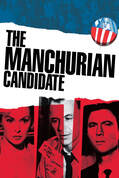
The Manchurian Candidate (1962)
A former prisoner of war is brainwashed as an unwitting assassin for an international Communist conspiracy. Director: John Frankenheimer Stars: Frank Sinatra, Laurence Harvey, Janet Leigh 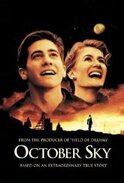
October Sky (1999)
The true story of Homer Hickam, a coal miner's son who was inspired by the first Sputnik launch to take up rocketry against his father's wishes. Director: Joe Johnston Stars: Jake Gyllenhaal, Chris Cooper, Laura Dern 
Thirteen Days (2000)
A dramatization of President Kennedy's administration's struggle to contain the Cuban Missile Crisis in October of 1962. (145 mins.) Director: Roger Donaldson Stars: Kevin Costner, Bruce Greenwood, Shawn Driscoll, Drake Cook 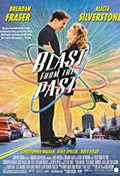
Blast from the Past (1999)
A naive man comes out into the world after spending 35 years in a nuclear fallout shelter. Director: Hugh Wilson Stars: Brendan Fraser, Alicia Silverstone, Christopher Walken 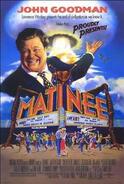
Matinee (1993)
A small-time film promoter releases a kitschy horror film during the Cuban Missile Crisis. Director: Joe Dante Stars: John Goodman, Cathy Moriarty, Simon Fenton 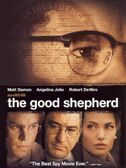
The Good Shepherd (2006)
The tumultuous early history of the Central Intelligence Agency is viewed through the prism of one man's life. Director: Robert De Niro Stars: Matt Damon, Angelina Jolie, Robert De Niro |
The Cold War in Asia: Crash Course US History #38John Green teaches you about the Cold War as it unfolded in Asia. As John pointed out last week, the Cold War was occasionally hot, and a lot of that heat was generated in Asia. This is starting to sound weird with the hot/cold thing, so let's just say that the United States struggle against communist expansion escalated to full-blown, boots on the ground war in Korea and Vietnam. In both of these cases, the United States sent soldiers to intervene in civil wars that it looked like communists might win. That's a bit of a simplification, but John will explain it all to you.
|
History through Hollywood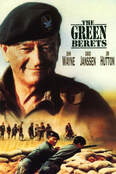
The Green Berets (1968)
Col. Mike Kirby picks two teams of crack Green Berets for a mission in South Vietnam. First off is to build and control a camp that is trying to be taken by the enemy the second mission is to kidnap a North Vietnamese General. Directors: Ray Kellogg, John Wayne Stars: John Wayne, David Janssen, Jim Hutton 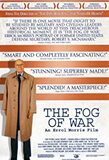
The Fog of War: Eleven Lessons from the Life of Robert S. McNamara (2003)
Documentary The story of America as seen through the eyes of the former Secretary of Defense under President John F. Kennedy and President Lyndon B. Johnson, Robert McNamara. Director: Errol Morris |
The Vietnam War: A Film By Ken Burns & Lynn Novick
Ken Burns and Lynn Novick’s ten-part, 18-hour documentary series, THE VIETNAM WAR, tells the epic story of one of the most consequential, divisive, and controversial events in American history as it has never before been told on film. Visceral and immersive, the series explores the human dimensions of the war through revelatory testimony of nearly 80 witnesses from all sides—Americans who fought in the war and others who opposed it, as well as combatants and civilians from North and South Vietnam. Ten years in the making, the series includes rarely seen and digitally re-mastered archival footage from sources around the globe, photographs taken by some of the most celebrated photojournalists of the 20th Century, historic television broadcasts, evocative home movies, and secret audio recordings from inside the Kennedy, Johnson, and Nixon administrations.
THE VIETNAM WAR | Consulting with Ken Burns & Lynn Novick | PBS
Official website: http://to.pbs.org/2gMme8N | #VietnamWarPBS Gen. Merrill McPeak and Mai Elliott talk about their experience consulting on The Vietnam War: A Film By Ken Burns & Lynn Novick.
|
The Vietnam War: A Film by Ken Burns and Lynn NovickIn a Columbia University forum, introduced by University President Lee C. Bollinger and moderated by Dean of General Studies Peter Awn, filmmakers Ken Burns and Lynn Novick will join in conversation with Michael K. Heaney, JD, PhD, a Vietnam veteran who attended Columbia’s School of General Studies in 1967, and current undergraduate Mark Franklin, an Iraq/Afghanistan veteran who is President of Columbia’s Student Military Veterans organization. They will talk about the military-civilian divide that grew on American college campuses during the Vietnam War and what has changed today because of efforts to heal that rift. While Columbia may be known for its anti-war activism a half century ago, over the past decade the University has become a major higher education destination for recent military veterans, both in its School of General Studies which was designed for such “non-traditional” undergraduate students after World War II, as well as its graduate and professional schools.
Ken Burns and Lynn Novick: The Vietnam War Is the Key to Understanding America
The Vietnam War led to more than 1.3 million deaths and it's one of the most divisive, painful, and poorly understood episodes in American history. Documentarians Ken Burns and Lynn Novick have spent the past decade making a film that aims to exhume the war's buried history. Their 10-part series, which premieres on PBS next week, is a comprehensive look at the secrecy, disinformation, and spin surrounding Vietnam, and its lasting impact on two nations. The 18-hour film combines never-before-seen historical footage, with testimonies from nearly 80 witnesses, including soldiers on both sides of the conflict, leaders of the protest movement, and civilians from North and South Vietnam. A two-time Academy Award winner, Burns is among the most celebrated documentary filmmakers of our time, best-known for the 1990 PBS miniseries The Civil War, which drew a television viewership of 40 million. He and Novick are longtime collaborators, and in 2011 she co-directed and produced with Prohibition with Burns. In 2011, Reason's Nick Gillespie interviewed Burns that film and the role of public television in underwriting his work. With the release of The Vietnam War, Gillespie sat down with Burns and Novick to talk about the decade-long process of making their new film, and why understanding what happened in Vietnam is essential to interpreting American life today. Produced by Todd Krainin. Cameras by Meredith Bragg, Austin Bragg, Mark McDaniel, and Krainin. Full interview transcript available at http://bit.ly/2x0e5U4
|
History through Song
|
Country Joe McDonald - I-Feel-Like-I'm-Fixin
|
Barry McGuire - Eve Of Destruction
Crosby, Sills, Nash & Young - Ohio
|
History through Hollywood
The Vietnam War
*WARNING! War Violence
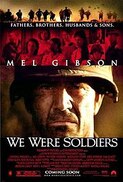
We Were Soldiers (2002)
The story of the first major battle of the American phase of the Vietnam War, and the soldiers on both sides that fought it, while their wives wait nervously and anxiously at home for the good news or the bad news.
Director: Randall Wallace
Stars: Mel Gibson, Madeleine Stowe, Greg Kinnear
The story of the first major battle of the American phase of the Vietnam War, and the soldiers on both sides that fought it, while their wives wait nervously and anxiously at home for the good news or the bad news.
Director: Randall Wallace
Stars: Mel Gibson, Madeleine Stowe, Greg Kinnear

Platoon (1986)
A young soldier in Vietnam faces a moral crisis when confronted with the horrors of war and the duality of man.
Director: Oliver Stone
Stars: Charlie Sheen, Tom Berenger, Willem Dafoe
A young soldier in Vietnam faces a moral crisis when confronted with the horrors of war and the duality of man.
Director: Oliver Stone
Stars: Charlie Sheen, Tom Berenger, Willem Dafoe
1968
A Brief Timeline of 1968
|
|
HISTORY: 1968 with Tom Brokaw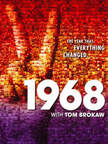
The year 1968 is considered one of the most turbulent, and pivotal, twelve month periods in American history. This single year was a flashpoint for many of the social, political, and cultural transformations for which the overall decade of the 1960s is known. During these years, the United States became entrenched in an unpopular war in Vietnam abroad, while unrest, experimentation, violence, and outspokenness raged throughout the nation. The Civil Rights Movement gained momentum, sit-ins and riots became commonplace, leaders were assassinated on a seemingly regular basis, and social experimentation and psychedelic music became the rage in San Francisco and elsewhere. Many consider these years divisive, others shameful, yet some believe they were necessary to galvanize change in America.
History through Song
|
The Beatles - Hey JudeThe Beatles - Revolution
The Rascals - A Beautiful Morning
|
Love is Blue - Paul MauriatSteppenwolf - Born To Be Wild
Aretha Franklin - Since You've Been Gone
|
CNN: '1968': The Year That Changed America
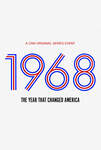
CNN's four-part Original Series Event '1968' looks back half a century at a year marked by the assassinations of MLK and RFK, a contentious presidential election, escalating anti-Vietnam War sentiment and more.
1968 Vietnam The assassination of an icon A cultural shift Presidency in the balance A space first
Top-grossing films of 1968

2001: A Space Odyssey (1968)
After discovering a mysterious artifact buried beneath the Lunar surface, mankind sets off on a quest to find its origins with help from intelligent supercomputer H.A.L. 9000. Director: Stanley Kubrick Stars: Keir Dullea, Gary Lockwood, William Sylvester 
Planet of the Apes (1968)
An astronaut crew crash-lands on a planet in the distant future where intelligent talking apes are the dominant species, and humans are the oppressed and enslaved. Director: Franklin J. Schaffner Stars: Charlton Heston, Roddy McDowall, Kim Hunter |

Funny Girl (1968)
The life of Fanny Brice, famed comedienne and entertainer of the early 1900s. We see her rise to fame as a Ziegfeld girl, subsequent career, and her personal life, particularly her relationship with Nick Arnstein. Director: William Wyler Stars: Barbra Streisand, Omar Sharif, Kay Medford 
Rosemary's Baby (1968)
A young couple trying for a baby move into a fancy apartment surrounded by peculiar neighbors. Director: Roman Polanski Stars: Mia Farrow, John Cassavetes, Ruth Gordon |
The Collapse of Communism
27. The collapse of communist governments in Eastern Europe and the USSR brought an end to the Cold War.
Resource: The Cold War Museum
Resource: Virtual Exhibits on Communism
- There were multiple causes for the collapse of communist governments in Eastern Europe and the Soviet Union. The effect of these was the reduction of the tensions between the U.S. and the U.S.S.R. that characterized the Cold War period. Several communist governments in Eastern Europe gave up power following mass demonstrations for democracy. The collapse of the Soviet Union resulted in independent republics that moved to institute democratic reforms and introduce free-market economies. This brought an end to the Cold War era.
- The political and economic turmoil occurring in some of the new governments posed new challenges for the United States. The U.S. supported economic and education reforms by providing assistance to some of the former communist countries.
Resource: The Cold War Museum
Resource: Virtual Exhibits on Communism
Social Transformations in the United States
(1945-1994)
The Cold War: Social Changes (Civil Rights)
|
-
28. Following World War II, the United States experienced a struggle for racial and gender equality and the extension of civil rights.
Resource: Hispanics in the U.S. Army Resource: Hispanic Americans in the U.S. Army Resource: UT at Austin - Latinos and Latinas & WWII Oral History Project Resource: Native Americans in World War II by Thomas D. Morgan Resource: Native Americans in the U.S. Army Resource: Justice and the Jim Crow Laws Resource: The March on Washington and Its Impact Resource: Civil Rights Greensboro Resource: Digital History - Civil Rights Voices Resource: UGA - Civil Rights Digital Library Resource: NAACP Resource: NEH, EDSITEment - "A Raisin in the Sun" Resource: NEH, EDSITEment - Dr. King's Dream Resource: NEH, EDSITEment - Martin Luther King, Jr., and Nonviolence Resource: NEH, EDSITEment - JFK, Freedom Riders... Resource: NEH, EDSITEment - JFK, LBJ, and the Fight... Resource: SCLC History Resource: Duke University - SNCC Legacy Project Resource: NUL History Resource: UFW Resource: UC San Diego Library - Farmworker Movement Document Project Resource: UW - Farm Workers in Washington State History Project Resource: Ohio Farm Bureau Resource: American Indian Movement Resource: American Indian Movement Interpretive Center Resource: Cleveland American Indian Movement Resource: Taking AIM, The Story of the American Indian Movement Resource: NOW Resource: Women for Women International Resource: USC, Gould School of Law - A Brief history of Jim Crow Laws
*Identified and recommended by Ms. Lynwood and her 5th graders reading, To Kill a Mockingbird
Sound Smart: The Freedom Rides | History
Historian Yohuru Williams describes the Civil Rights-era Freedom Rides protests and the Supreme Court decisions that inspired them.
History through Song
|
History through Hollywood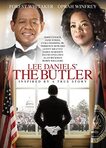
The Butler (2013)
As Cecil Gaines serves eight presidents during his tenure as a butler at the White House, the civil rights movement, Vietnam, and other major events affect this man's life, family, and American society. Director: Lee Daniels Stars: Forest Whitaker, Oprah Winfrey, John Cusack 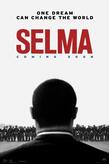
Selma (2014)
A chronicle of Martin Luther King's campaign to secure equal voting rights via an epic march from Selma to Montgomery, Alabama in 1965. Director: Ava DuVernay Stars: David Oyelowo, Carmen Ejogo, Tim Roth 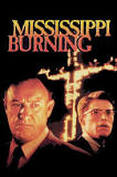
Mississippi Burning (1988)
Two FBI agents with wildly different styles arrive in Mississippi to investigate the disappearance of some civil rights activists. Director: Alan Parker Stars: Gene Hackman, Willem Dafoe, Frances McDormand 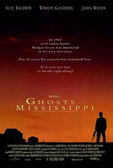
Ghosts of Mississippi (1996)
A Mississippi district attorney and the widow of Medgar Evers struggle to finally bring a white racist to justice for the 1963 murder of the civil rights leader. Director: Rob Reiner Stars: Alec Baldwin, James Woods, Whoopi Goldberg 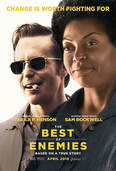
The Best of Enemies (2019)
Civil rights activist Ann Atwater faces off against C.P. Ellis, Exalted Cyclops of the Ku Klux Klan, in 1971 Durham, North Carolina over the issue of school integration. (Inspired by true events chronicled in 'The Best of Enemies: Race and Redemption in the New South' by Osha Gray Davidson) Director: Robin Bissell Stars: Taraji P. Henson, Sam Rockwell, Babou Ceesay 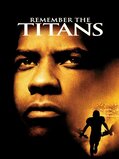
Remember the Titans (2000)
The true story of a newly appointed African-American coach and his high school team on their first season as a racially integrated unit. Director: Boaz Yakin Stars: Denzel Washington, Will Patton, Wood Harris 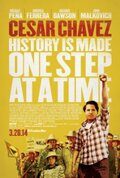
Cesar Chavez (2014)
A biography of the civil-rights activist and labor organizer Cesar Chavez. Director: Diego Luna Stars: Michael Peña, America Ferrera, Rosario Dawson |
Civil Rights and the 1950s: Crash Course US History #39
|
John Green teaches you about the early days of the Civil Rights movement. By way of providing context for this, John also talks a bit about wider America in the 1950s. The 1950s are a deeply nostalgic period for many Americans, but there is more than a little idealizing going on here. The 1950s were a time of economic expansion, new technologies, and a growing middle class. America was becoming a suburban nation thanks to cookie-cutter housing developments like the Levittowns. While the white working class saw their wages and status improve, the proverbial rising tide wasn't lifting all proverbial ships. A lot of people were excluded from the prosperity of the 1950s. Segregation in housing and education made for some serious inequality for African Americans. As a result, the Civil Rights movement was born. John will talk about the early careers of Martin Luther King, Thurgood Marshall, Rosa Parks, and even Earl Warren. He'll teach you about Brown v Board of Education, and the lesser known Mendez vs Westminster, the Montgomery Bus Boycott, and all kinds of other stuff.
Civil Rights resources: |
Sound Smart: The Voting Rights Act of 1965 | History
Historian Yohuru Williams explains the events leading up to the passage of the Voting Rights Act in 1965 and the act's historical significance.
Sound Smart: The Black Panthers | History
Historian Yohuru Williams recounts the history of the Black Panther Party in the United States.
For additional resources on the Civil Rights Movement, please review my Black History pages: |
The Cold War: Economic & Scientific Advancements
|
29. The postwar economic boom, greatly affected by advances in science, produced epic changes in American life. The United States experienced an era of unprecedented prosperity and economic growth following World War II. Contributing to this prosperity was public demand for goods and services. The demand for housing and automobile ownership spurred the growth of suburbs. Economic opportunities in defense plants and high-tech industries led to the growth of the Sunbelt. Postwar prosperity produced some other epic changes (e.g., baby boom, increased consumerism, increased mobility via automobiles, pop culture, franchising and longer life spans). Advances in science following the war also impacted American life. Examples include:
Resource: College of Physicians of Philadelphia - Timeline of Polio Resource: PBS- On the Edge Paralyzing Polio Resource: Polio Global Eradication Initative Resource: National Museum of Nuclear Science & History Resource: Atomic Archive
|
History through Hollywood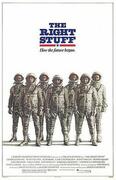
The Right Stuff (1983)
The story of the original Mercury 7 astronauts and their macho, seat-of-the-pants approach to the space program. Director: Philip Kaufman Stars: Sam Shepard, Scott Glenn, Ed Harris 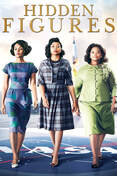
Hidden Figures (2016)
The story of a team of female African-American mathematicians who served a vital role in NASA during the early years of the U.S. space program. Director: Theodore Melfi Stars: Taraji P. Henson, Octavia Spencer, Janelle Monáe 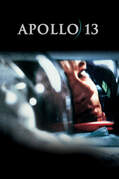
Apollo 13 (1995)
NASA must devise a strategy to return Apollo 13 to Earth safely after the spacecraft undergoes massive internal damage putting the lives of the three astronauts on board in jeopardy. Director: Ron Howard Stars: Tom Hanks, Bill Paxton, Kevin Bacon |
The Cold War: Social Changes (Population Demographics)
|
30. The continuing population flow from cities to suburbs, the internal migrations from the Rust Belt to the Sun Belt and the increase in immigration resulting from passage of the 1965 Immigration Act have had social and political effects.
Resource: The Growth of the Suburbs – and the Racial Wealth Gap Resource: NEH, EDSITEment - Building Suburbia: Highways and Housing in Postwar America Resource: Immigrant Voices 1950s newsreel about the building of suburbia in Levittown |
History through Hollywood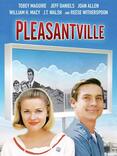
Pleasantville (1998)
Two 1990s teenage siblings find themselves in a 1950s sitcom, where their influence begins to profoundly change that complacent world. Director: Gary Ross Stars: Tobey Maguire, Jeff Daniels, Joan Allen 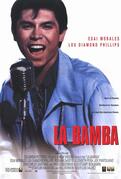
La Bamba (1987)
Biographical story of the rise from nowhere of early rock and roll singer Ritchie Valens who died at age 17 in a plane crash with Buddy Holly and The Big Bopper. Director: Luis Valdez Stars: Lou Diamond Phillips, Esai Morales, Rosanna DeSoto 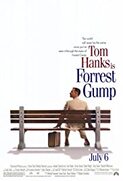
Forrest Gump (1994)
The presidencies of Kennedy and Johnson, the events of Vietnam, Watergate and other historical events unfold through the perspective of an Alabama man with an IQ of 75, whose only desire is to be reunited with his childhood sweetheart. Director: Robert Zemeckis Stars: Tom Hanks, Robin Wright, Gary Sinise, Sally Field |
Wholesome TV about the 1950s & 1960s
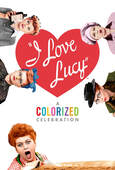
I Love Lucy (TV Series 1951–1957)
The wife of a band leader constantly tries to become a star - in spite of her having no talent, and gets herself (along with her best friend) into the funniest predicaments. Stars: Lucille Ball, Desi Arnaz, Vivian Vance 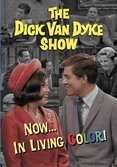
The Dick Van Dyke Show (TV Series 1961–1966)
The misadventures of a TV writer both at work and at home. Creator: Carl Reiner Stars: Dick Van Dyke, Mary Tyler Moore, Rose Marie 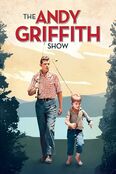
The Andy Griffith Show (TV Series 1960–1968)
Widower Sheriff Andy Taylor, and his son Opie, live with Andy's Aunt Bee in Mayberry, North Carolina. With virtually no crimes to solve, most of Andy's time is spent philosophizing and calming down his cousin Deputy Barney Fife. Creators: Sheldon Leonard, Aaron Ruben, Danny Thomas Stars: Andy Griffith, Ron Howard, Don Knotts |
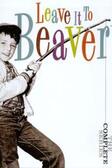
Leave It to Beaver (TV Series 1957–1963)
The misadventures of a suburban boy, family and friends. Creators: Joe Connelly, Bob Mosher, Dick Conway Stars: Jerry Mathers, Hugh Beaumont, Barbara Billingsley 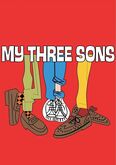
My Three Sons (TV Series 1960–1972)
Widower Steve Douglas raises three sons with the help of his father-in-law, and is later aided by the boys' great-uncle. An adopted son, a stepdaughter, wives, and another generation of sons join the loving family in later seasons. Stars: Fred MacMurray, Stanley Livingston, Don Grady 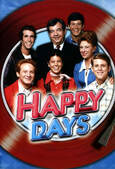
Happy Days (TV Series 1974–1984)
The Cunningham family live through the 1950s with help and guidance from the lovable and almost superhuman greaser, Fonzie. Creator: Garry Marshall Stars: Ron Howard, Henry Winkler, Marion Ross |
The Cold War: The Role of Government
31. Political debates focused on the extent of the role of government in the economy, environmental protection, social welfare and national security.
Resource: Teach Rock - THE PROTEST TRADITION
Resource: Earth Day 40th Anniversary Curriculum Unit
Resource: Enironmental Protection Agency
- The 1930s and early 1940s witnessed a great expansion in the role of the federal government in various policy areas. This expanded role continued to be the focus of political debates in the postwar period. For the economy, the debates were between those who favored a more activist role of the government to correct inequities and those who felt that the government should lessen its involvement and let the marketplace work. Public opinion on this issue was often influenced by the current state of the economy.
- The debate on the government’s role to protect the environment in the postwar period increased during this period due to research on the effects of pesticides, pollution and waste disposal, and concerns about conservation and global warming. Demands from environmentalists led to the creation of the Environmental Protection Agency.
- The government’s role on social welfare issues attracted intense debates, particularly relating to poverty, unemployment and national health insurance.
- The controversies surrounding the federal government’s role in protecting the country recurred during times of perceived threats. Fears concerning communist infiltration of the government during the 1940s and 1950s, and anti-war protests during the Vietnam Era, led to debates over national security.
Resource: Teach Rock - THE PROTEST TRADITION
Resource: Earth Day 40th Anniversary Curriculum Unit
Resource: Enironmental Protection Agency
The 1960s in America: Crash Course US History #40
|
John Green teaches you about a time of relative tumult in the United States, the 1960s. America was changing rapidly in the 1960s, and rights movements were at the forefront of those changes. Civil Rights were dominant, but the 60s also saw growth in the Women's Movement, the LGBT rights movement, the Latino rights movement, and the American Indian movement. Also, Americans began to pay a bit more attention to the environment. All this change happened against the backdrop of the Cold War and the Rise of Conservatism. It was just wild. John will teach you about sit-ins, Freedom Rides, The March on Washington, MLK, JFK, LBJ, and NOW. Man, that is a lot of initialisms. And one acronym.
|
Sound Smart: The 1960s | History
Historian Yohuru Williams sums up the tumultuous political and cultural movements of the 1960s.
|
EnvironmentHow Rachel Carson Launched The Environmental Movement
Environmental conservation pioneer Rachel Carson is one of the remarkable leaders who persevered in turbulent times and became a better leader for it whom Nancy Koehn profiles in her book, FORGED IN CRISIS.
Clear Skies, Clean AirCreator(s): General Services Administration. Office of Public Information. 1949- ? (Most Recent)
Series: Moving Images Relating to General Government Services, ca. 1971 - 1994 Record Group 269: General Records of the General Services Administration, 1922 - 1997 Production Date: ca. 1971 Scope & Content: This film illustrates the General Services Administration's internal use of a natural gas-powered automobile as a partial solution to the energy crisis. National Archives Identifier: 2694749 Local Identifier: 269-2 https://catalog.archives.gov/id/2694749 |
Labor RightsThe Story of OSHAThe Story of OSHA (1980) This film tells workers how OSHA was set up to stem the tide of disease, injury, and death, and what their rights are under the law. Explains how NIOSH conducts tests, how standards are set, and how OSHA investigates complaints. Produced and distributed by OSHA in 1980. Then in 1981, the incoming head of OSHA Thorne Auchter recalled and destroyed most copies. A few copies were kept alive by renegade union officials who refused to return their copies. The penalty for being discovered in possession of one of these films was loosing all OSHA funding for their safety and health programs. This film was preserved through the years through the efforts of Mark Catlin, who made this and other censored OSHA films available for digitizing.
Labor Relations
Exactly how political, economic, and workforce changes affect employers and unions will be factors in the future of the labor–management relationship.
|
EqualityWhy hasn't the Equal Rights Amendment been ratified?
Did you know the Equal Rights Amendment, which guarantees equal legal rights regardless of sex, has been passed by 37 states — and that constitutional amendments need to be passed by 38 states to become enshrined in that founding document?
Phyllis Schlafly debates Betty Friedan on ERAPhyllis Schlafly and Betty Friedan debate the Equal Rights Amendment and the women's liberation movement on Good Morning America. Aired January 28, 1976
|
American Experience: Rachel Carson
Rachel Carson, Silent Spring
www.rachelcarson.org › SilentSpring Silent Spring 50th Anniversary Edition Silent Spring began with a “fable for tomorrow” – a true story using a composite of .. Silent Spring Institute
silentspring.org Silent Spring Institute is a mission-driven scientific research organization dedicated to uncovering the environmental causes of breast cancer. Our independent .. |
When Rachel Carson’s Silent Spring was published in 1962, the book became a phenomenon. A passionate and eloquent warning about the long-term dangers of pesticides, the book unleashed an extraordinary national debate and was greeted by vigorous attacks from the chemical industry. But it would also inspire President John F. Kennedy to launch the first-ever investigation into the public health effects of pesticides — an investigation that would eventually result in new laws governing the regulation of these deadly agents.
Chapter 1 | Rachel Carson | American Experience | PBS
Rachel Carson is an intimate portrait of the woman whose groundbreaking books revolutionized our relationship to the natural world. When Silent Spring was published in September 1962 it became an instant bestseller and would go on to spark dramatic changes in the way the government regulated pesticides.
|
The Rise of Conservatism: Crash Course US History #41
|
John Green teaches you about the rise of the conservative movement in United States politics. So, the sixties are often remembered for the liberal changes that the decade brought to America, but lest you forget, Richard Nixon was elected to the presidency during the sixties. The conservative movement didn't start with Nixon though. Modern conservatism really entered mainstream consciousness during the 1964 presidential contest between incumbent president and Kennedy torch-bearer Lyndon B Johnson, and Republican senator Barry Goldwater. While Goldwater never had a shot in the election, he used the campaign to talk about all kinds of conservative ideas. At the same time, several varying groups, including libertarian conservatives and moral conservatives, began to work together. Goldwater's trailblazing and coalition building would pay off in 1968 when Richard Nixon was elected to the White House, and politics changed forever when Nixon resigned over the Watergate scandal. You'll also learn about the ERA, , EPA, OSHA, the NTSB, and several other acronyms and initialisms.
|
Reagan Conservatism
Ronald Reagan expertly articulates what Conservatism means. This clip is from his 1966 announcement for Governor of California. Here he is addressing Democrats who may be questioning what their leaders are doing. "Can we possibly believe that anyone can manage our lives better than we can manage them ourselves?"
|
|
History Through Hollywood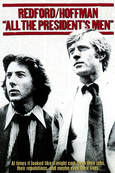
All the President's Men (1976)
"The Washington Post" reporters Bob Woodward and Carl Bernstein uncover the details of the Watergate scandal that leads to President Richard Nixon's resignation. Director: Alan J. Pakula Writers: Carl Bernstein (book), Bob Woodward (book) Stars: Dustin Hoffman, Robert Redford, Jack Warden 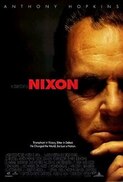
Nixon (1995)
A biographical story of former U.S. President Richard Nixon, from his days as a young boy, to his eventual Presidency, which ended in shame. Director: Oliver Stone Writers: Stephen J. Rivele, Christopher Wilkinson | 1 more credit » Stars: Anthony Hopkins, Joan Allen, Powers Boothe 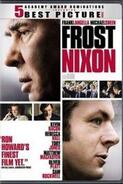
Frost/Nixon (2008)
A dramatic retelling of the post-Watergate television interviews between British talk-show host David Frost and former president Richard Nixon. Director: Ron Howard Stars: Frank Langella, Michael Sheen, Kevin Bacon |
United States and
the Post-Cold War World
(1991-Present)
The Modern U.S.
32. Improved global communications, international trade, transnational business organizations, overseas competition and the shift from manufacturing to service industries have impacted the American economy.
- The American economy has been impacted by many influences since the early 1990s. Global communication has rapidly increased use of technologies such as the personal computer, Internet and mobile phone.
- Business organizations that operate internationally with production facilities in more than one country have grown exponentially. For example, an American automobile might have parts imported from several countries and be assembled in yet another country.
- Overseas competition has challenged American producers and local communities. The U.S. trade deficit has increased with the value of goods and services imported exceeding those that are exported. This has led to a decrease in manufacturing jobs and closing of plants. It also has contributed to a shift toward service industries and a growth in lower-paying jobs in fast food and sales
Resource: USAID - Mobile Solution
Resource: MIT Technology Review - Are Smart Phones Spreading Faster than Any Technology in Human History?
Resource: Pew Research Center - Part 1: How the internet has woven itself into American life
Resource: The Aspen Institute - Global Consequences of Next-Generation Media
Resource: Business Insider - These 14 giant corporations dominate the global auto industry
Resource: Scaruffi.com - A Timeline of the Automobile Industry
Resource: Quandl - USA>Statistical Data>U.S. World Trade
Resource: DATA 360 - U.S. Trade Balance
Resource: Globalization 101 - The Trade Balance
Resource: MIT Technology Review - Are Smart Phones Spreading Faster than Any Technology in Human History?
Resource: Pew Research Center - Part 1: How the internet has woven itself into American life
Resource: The Aspen Institute - Global Consequences of Next-Generation Media
Resource: Business Insider - These 14 giant corporations dominate the global auto industry
Resource: Scaruffi.com - A Timeline of the Automobile Industry
Resource: Quandl - USA>Statistical Data>U.S. World Trade
Resource: DATA 360 - U.S. Trade Balance
Resource: Globalization 101 - The Trade Balance
The 1970s
Ford, Carter, and the Economic Malaise: Crash Course US History #42
|
John Green teaches you about the economic malaise that beset the United States in the 1970s. A sort of perfect storm of events, it combined the continuing decline of America's manufacturing base and the oil shocks of 1973 and 1979, and brought about an stagnant economy, paired with high inflation. Economists with a flair for neologisms and portamenteau words called this "stagflation," and it made people miserable. Two presidential administrations were scuttled at least in part by these economic woes; both Gerald Ford and Jimmy Carter are considered failed presidents for many reasons, but largely because of an inability to improve the economy. (hint: In reality, no one person can materially change something as big as the world economy, even if they are president, but one person sure can make a handy scapegoat!) So, by and large, the 70s were a pretty terrible time in America economically, but at least the decade gave us Mr. Green.
|
This History of the 1970s Energy CrisisThis outlines the gas crisis in the United States and how it was corrected with more fuel efficient usage of oil products.
History Documentary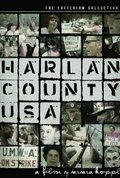
Harlan County U.S.A. (1976)
A filmed account of a bitterly violent miner strike. Director: Barbara Kopple Stars: Norman Yarborough, Houston Elmore,Phil Sparks, John Corcoran |
Jimmy Carter - U.S. President | Mini Bio | BIO
Born on October 1, 1924, in Plains, Georgia, Jimmy Carter was the 39th president of the United States (1977-81) and served as the nation's chief executive during a time of serious problems at home and abroad. Carter's perceived mishandling of these issues led to defeat in his bid for reelection. He later turned to diplomacy and advocacy, for which he was awarded the Nobel Prize for Peace in 2002. #Biography
Carter and the Economy: Energy Crisis
Carter asked the American people to cut down their energy usage during a fireside chat on February 2, 1977. "All of us must learn to waste less energy," Carter said.
|
|
The 1980s
The Reagan Revolution: Crash Course US History #43 John Green teaches you about what is often called the Reagan Era. Mainly, it covers the eight years during which a former actor who had also been governor of the state of California was president of the United States. John will teach you about Reagan's election victory over the hapless Jimmy Carter, tax cuts, Reagan's Economic Bill of Rights, union busting, and the Iran-Contra among other things. Learn about Reagan's domestic and foreign policy initiatives, and even a little about Bonzo the Chimp.
|
Here's Why Reaganomics is so Controversial | History
"Learn about President Ronald Reagan's economic policies, which are known as Reaganomics, and why its trickle-down theory construct — giving huge tax cuts to the wealthy and corporations — is a controversial idea even to this day".
|
|
History Through Hollywood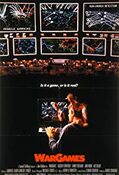
War Games
(1983) A young man finds a back door into a military central computer in which reality is confused with game-playing, possibly starting World War III. Director: John Badham Stars: Matthew Broderick, Ally Sheedy, John Wood 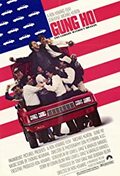
Gung Ho (1986)
When a Japanese car company buys an American plant, the American liaison must mediate the clash of work attitudes between the foreign management and native labor. Director: Ron Howard Stars: Michael Keaton, Gedde Watanabe, George Wendt 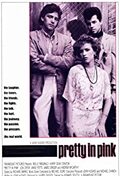
Pretty in Pink (1986)
A poor girl must choose between the affections of dating her childhood sweetheart or a rich but sensitive playboy. Director: Howard Deutch Stars: Molly Ringwald, Jon Cryer, Harry Dean Stanton 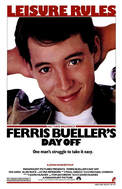
Ferris Bueller's Day Off (1986)
A high school wise guy is determined to have a day off from school, despite what the Principal thinks of that. Director: John Hughes Stars: Matthew Broderick, Alan Ruck, Mia Sara |
The 1990s
George HW Bush and the End of the Cold War: Crash Course US History #44John Green teaches you about the end of the Cold War and the presidency of George H.W. Bush. It was neither the best of times, nor the worst of times. On the domestic front, the first president Bush inherited the relative prosperity of the later Reagan years, and watched that prosperity evaporate. That was about all the interest Bush 41 had, domestically, so let's move to foreign policy, which was a bigger deal at this time. The biggie was the end of the Cold War, which is the title of the video, so you know it's important. The collapse of the Soviet Union was the biggest deal of Bush's term, and history has assigned the credit to Ronald Reagan. We give the guy a break, and say that he helped. He was certainly expert in foreign policy, having been and envoy to China, ambassador to the United Nations, and head of the CIA. Bush also oversaw the first Gulf War, which was something of a success, in that the primary mission was accomplished, and the vast majority of the troops were home in short order. It didn't do much to address some of the other problems in the region, but we'll get to that in the next few weeks. Along with all this, you'll learn about Bush's actions, or lack thereof, in Somalia and the Balkans, and you'll even be given an opportunity to read Bush's lips.
|
The rise and fall of the Berlin Wall - Konrad H. Jarausch
View full lesson: https://ed.ted.com/lessons/the-rise-a... On August 13, 1961, construction workers began tearing up streets and erecting barriers in Berlin. This night marked the beginning of one of history’s most infamous dividing lines: the Berlin Wall. Construction continued for a decade as the wall cut through neighborhoods, separated families, and divided not just Germany, but the world. Konrad H. Jarausch details the history of the Berlin Wall. Lesson by Konrad H. Jarausch, directed by Remus & Kiki.
|
|
History Through Hollywood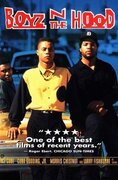
Boyz n the Hood (1991)
Follows the lives of three young males living in the Crenshaw ghetto of Los Angeles, dissecting questions of race, relationships, violence, and future prospects. Director: John Singleton Stars: Cuba Gooding Jr., Laurence Fishburne, Hudhail Al-Amir 
Courage Under Fire (1996)
A U.S. Army officer, despondent about a deadly mistake he made, investigates a female chopper commander's worthiness for the Medal of Honor. Director: Edward Zwick Stars: Denzel Washington, Meg Ryan, Lou Diamond Phillips 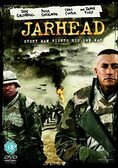
Jarhead (2005)
A psychological study of operations desert shield and desert storm during the gulf war; through the eyes of a U.S marine sniper who struggles to cope with the possibility his girlfriend may be cheating on him back home. Director: Sam Mendes Stars: Jake Gyllenhaal, Jamie Foxx, Lucas Black 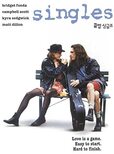
Singles (1992)
A group of twenty-something friends most of whom live in the same apartment complex search for love and success in grunge-era Seattle. Director: Cameron Crowe Stars: Bridget Fonda, Campbell Scott, Kyra Sedgwick 
Into the Wild (2007)
After graduating from Emory University, top student and athlete Christopher McCandless abandons his possessions, gives his entire $24,000 savings account to charity and hitchhikes to Alaska to live in the wilderness. Along the way, Christopher encounters a series of characters that shape his life. Director: Sean Penn Stars: Emile Hirsch, Vince Vaughn, Catherine Keener |
A New Age of Television
The number of cable services aimed at specific audiences with specialized interests grew at its greatest pace ever during this period, dividing the audience into smaller and smaller segments. Inevitably, the share of that audience held by each of the major networks continued to decline, although each network was still attracting many more viewers than any of the cable channels. Besides the familiar cable services dedicated to news, sports, movies, shopping, and music, entire cable channels were devoted to cooking (Food Network), cartoons (Cartoon Network), old television (Nick at Nite, TV Land), old movies (American Movie Classics, Turner Classic Movies), home improvement and gardening (Home and Garden Television [HGTV]), comedy (Comedy Central), documentaries (Discovery Channel), animals (Animal Planet), and a host of other interests. The Golf Channel and the Game Show Network were perhaps the most emblematic of how far target programming could go during this era. By the end of the decade, almost 80 percent of American households had access to cable programming through cable hookups or direct delivery by satellite.
CNN Live Coverage - Start of Iraq War (7:00 P.M E.T - 12:00 A.M E.T) |
|
The Clinton Years, or the 1990s: Crash Course US History #45John Green teaches you about the United States as it was in the 1990s. You'll remember from last week that the old-school Republican George H.W. Bush had lost the 1992 presidential election to a young upstart Democrat from Arkansas named Bill Clinton. Clinton was a bit of a dark horse candidate, having survived a sex scandal during the election, but a third party run by Ross Perot split the vote, and Clinton was inaugurated in 1993. John will teach you about Clinton's foreign policy agenda, which included NATO action in the Balkans and the Oslo Accords between Israel and the PLO. He'll also cover some of the domestic successes and failures of the Clinton years, including the failed attempt at healthcare reform, the pretty terrible record on GLBTQ issues, Welfare reform, which got mixed reviews, and the happier issues like the huge improvements in the economy. Also computers. Cheap, effective, readily available computers came along in the 1990s and they kind of changed the world, culminating in this video, which is the end of the internet. Until next week.
|
The 90s: The Last Great Decade?
|
The World after September 11, 2001
33. The United States faced new political, national security and economic challenges in the post-Cold War world and following the attacks on September 11, 2001.
The post-Cold War period and the attacks on September 11, 2001, presented new challenges for the United States, including:
Economic challenges for the country included operating within a globalized economy. The country witnessed the change from the prosperity of the 1990s to the recession that began in 2007. Reductions in defense spending due to the end of the Cold War led to the loss of millions of U.S. jobs in defense plants.
The attacks on Sept. 11, 2001, presented national security challenges for the country. Debates over two wars (i.e., Iraq and Afghanistan) that were launched in response to the September 11 attacks, the passage of the USA PATRIOT Act and the detainment and torture of enemy combatants divided the country.
The post-Cold War period and the attacks on September 11, 2001, presented new challenges for the United States, including:
- Instability produced by the demise of balance-ofpower politics:
- Changing role of the United States in global politics (e.g., preemptive wars);
- Issues surrounding the control of nuclear weapons:
- Broadening of terrorism; and
- Dynamic of balancing national security with civil liberties.
Economic challenges for the country included operating within a globalized economy. The country witnessed the change from the prosperity of the 1990s to the recession that began in 2007. Reductions in defense spending due to the end of the Cold War led to the loss of millions of U.S. jobs in defense plants.
The attacks on Sept. 11, 2001, presented national security challenges for the country. Debates over two wars (i.e., Iraq and Afghanistan) that were launched in response to the September 11 attacks, the passage of the USA PATRIOT Act and the detainment and torture of enemy combatants divided the country.
Resource: UNODA - Nuclear Weapons
Resource: Brookings - NATO, Nuclear Weapons and Arms Control
Resource: Brookings - 50 Facts About U.S. Nuclear Weapons Today
Resource: NCBI - Proliferation of Nuclear Weapons: Opportunities for Control and Abolition
Resource: Nuclear Files - Nuclear Arms Control Treaties
Resource: Washington Times - U.N. panel to frame guidelines on legality of pre-emptive strike
Resource: CFR- The Bush Administration's Doctrine of Preemption (and Prevention): When, How, Where?
Resource: BBC - Ethics Guide, Pre-emptive strikes
Resource: ThoughtCast - Alan Dershowitz on Preemption and the Hezbollah
Resource: U.S. National Counterterrorism Center
Resource: PBS, Frontline - Target America
Resource: UN - Text and Status of the United Nations Conventions on Terrorism
Resource: Red Cross - International humanitarian law and terrorism: questions and answers
Resource: Brookings - NATO, Nuclear Weapons and Arms Control
Resource: Brookings - 50 Facts About U.S. Nuclear Weapons Today
Resource: NCBI - Proliferation of Nuclear Weapons: Opportunities for Control and Abolition
Resource: Nuclear Files - Nuclear Arms Control Treaties
Resource: Washington Times - U.N. panel to frame guidelines on legality of pre-emptive strike
Resource: CFR- The Bush Administration's Doctrine of Preemption (and Prevention): When, How, Where?
Resource: BBC - Ethics Guide, Pre-emptive strikes
Resource: ThoughtCast - Alan Dershowitz on Preemption and the Hezbollah
Resource: U.S. National Counterterrorism Center
Resource: PBS, Frontline - Target America
Resource: UN - Text and Status of the United Nations Conventions on Terrorism
Resource: Red Cross - International humanitarian law and terrorism: questions and answers
Terrorism, War, and Bush 43: Crash Course US History #46
|
John Green teaches you about the tumultuous 2000's in the United States of America, mainly the 2000's that coincide with the presidency of George W Bush. From the controversial election in 2000, to the events of 9/11 and Bush's prosecution of the War on Terror, the George W. Bush presidency was an eventful one. John will teach you about Bush's domestic policies like tax cutting, education reform, and he'll get into the wars in Afghanistan and Iraq. The event that came to pass during Bush's presidency are still very much effecting the United States and the world today, so listen up!
|
What Happened on 9/11
9/11 shocked America and changed the course of modern history. Everyone knows what happened on that day…right? The truth is, many young people don’t, but they need to. CJ Pearson explains why.
|
|
History Through Hollywood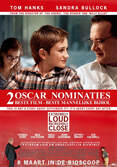
Extremely Loud & Incredibly Close (2011)
A nine-year-old amateur inventor, Francophile, and pacifist searches New York City for the lock that matches a mysterious key left behind by his father, who died in the World Trade Center on September 11, 2001. Director: Stephen Daldry Stars: Thomas Horn, Tom Hanks, Sandra Bullock 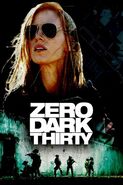
Zero Dark Thirty (2012)
A chronicle of the decade-long hunt for al-Qaeda terrorist leader Osama bin Laden after the September 2001 attacks, and his death at the hands of the Navy S.E.A.L.s Team 6 in May 2011. Director: Kathryn Bigelowl Stars: Jessica Chastain, Joel Edgerton, Chris Pratt 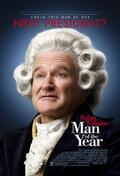
Man of the Year (2006)
A comedian who hosts a news satire program decides to run for president, and a computerized voting machine malfunction gets him elected. Director: Barry Levinson Stars: Robin Williams, Laura Linney, Lewis Black |
Obamanation: Crash Course US History #47
|
|
John Green teaches you about recent history. By which we mean VERY recent history. John covers the end of George W. Bush's administration presidency of Barack Obama (so far). Some people would say, "It's too soon to try to interpret the historical importance of such recent events!" To those people we answer, "You're right." Nonetheless, it's worthwhile to take a look at the American we live in right now as a way of looking back at how far we've come. Anyway, John will teach you about Obama's election, some of his policies like the Affordable Care Act, the 2009 stimulus, and the continuation of the war on terror. If you still can't reconcile a history course teaching such recent stuff, just think of this one as a current events episode.
|
How the American people govern themselves at national, state and local levels of government is the basis for this course. Students can impact issues addressed by local governments through service learning and senior projects.


